In the scenario, conceived already before the pandemic and presented at this year’s Milano Design Week, all of our natural environments have been destroyed, and we now live in [Tunnel 29]. Taken together, the exhibited projects foresee a post-industrial dystopia where life only persists in a closely controlled artificial environment, filled with DIY furniture from recycled plastics, invasive plant species and salvaged scrap metal, and where survivors grow their own food. How is our effort to confront this reality reflected in the designs made for tomorrow?
Exhibition [Tunnel 29] – Design for a Post-Apocalyptic World
Presented at Superstudio Piú during the Milan Design Week, September 2021
Press release
During the Milan Design Week the exhibition has been hosted in SUPERDESIGN SHOW 2021 at Via Tortona 27. A selection of thirty products was presented, that dares to look beyond the present and predict how we will live in twenty or thirty years. The projects have been selected from an open call for participation by the committee: architect and designer Vasa Perović, designer and teacher Leonora Jakovljević, designer Jan Jagodič, curator and designer Federica Sala, curator for architecture and design Maja Vardjan, architect and head of programme of CfC Mika Cimolini.
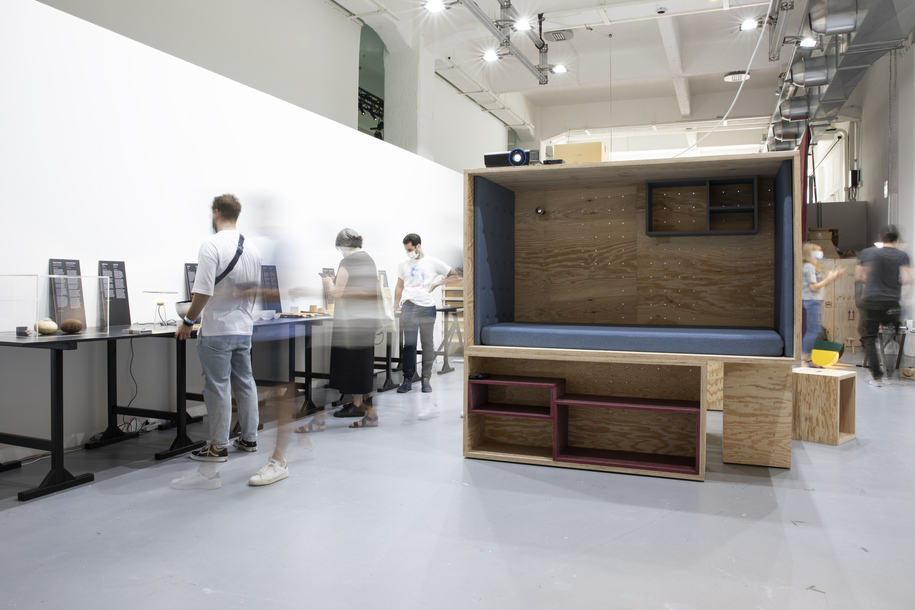
The exhibition [Tunnel 29] – Design for a Post-Apocalyptic World is a promotional event organized in the framework of the Slovenian presidency to the Council of the European Union. The exhibition is organized in cooperation between the Centre for Creativity/MAO, Ministry of Foreign Affairs and the Ministry of Culture of the Republic of Slovenia and the Embassy of the Republic of Slovenia in Italy. The Centre for Creativity is co-funded by the European Union’s European Regional Development Fund and the Republic of Slovenia
The aim of “design for a post-apocalyptic world” is to take people out of their comfort zones and find design solutions for the reality that we are already living.
How can we prepare for the inevitable apocalypse heralded by viruses and climate-related disasters? How can we push it back through the way we live our lives?
“Design for a post-apocalyptic world” looked into three dimensions of living: housing, production and food.
The projects in the first segment tackled mobility, the need for intimacy and basic functionality of living (sleeping, excretion, storage). The production segment showcased DIY projects, from a waste plastic recycling machine and simple plans for making furniture from invasive plants, to recipes for making bioplastics out of paper that cannot be recycled otherwise. The third part focused on products that facilitate efforts for growing our own food. A chicken coop, a fire plate that can also be used for cooking, wicker-clad bottles to carry water or concrete garden furniture – these products are not only eco-friendly and functional, they are what society and the economy will need to survive the future.
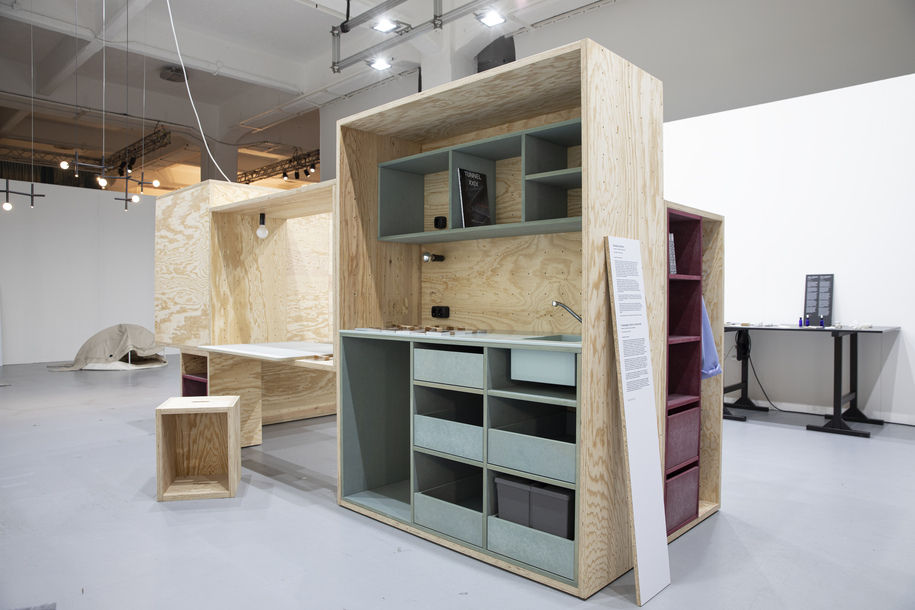
Exhibited products
1. Nonstop Interior Landscape_ by Arne Vehovar, Urša Vrhunc
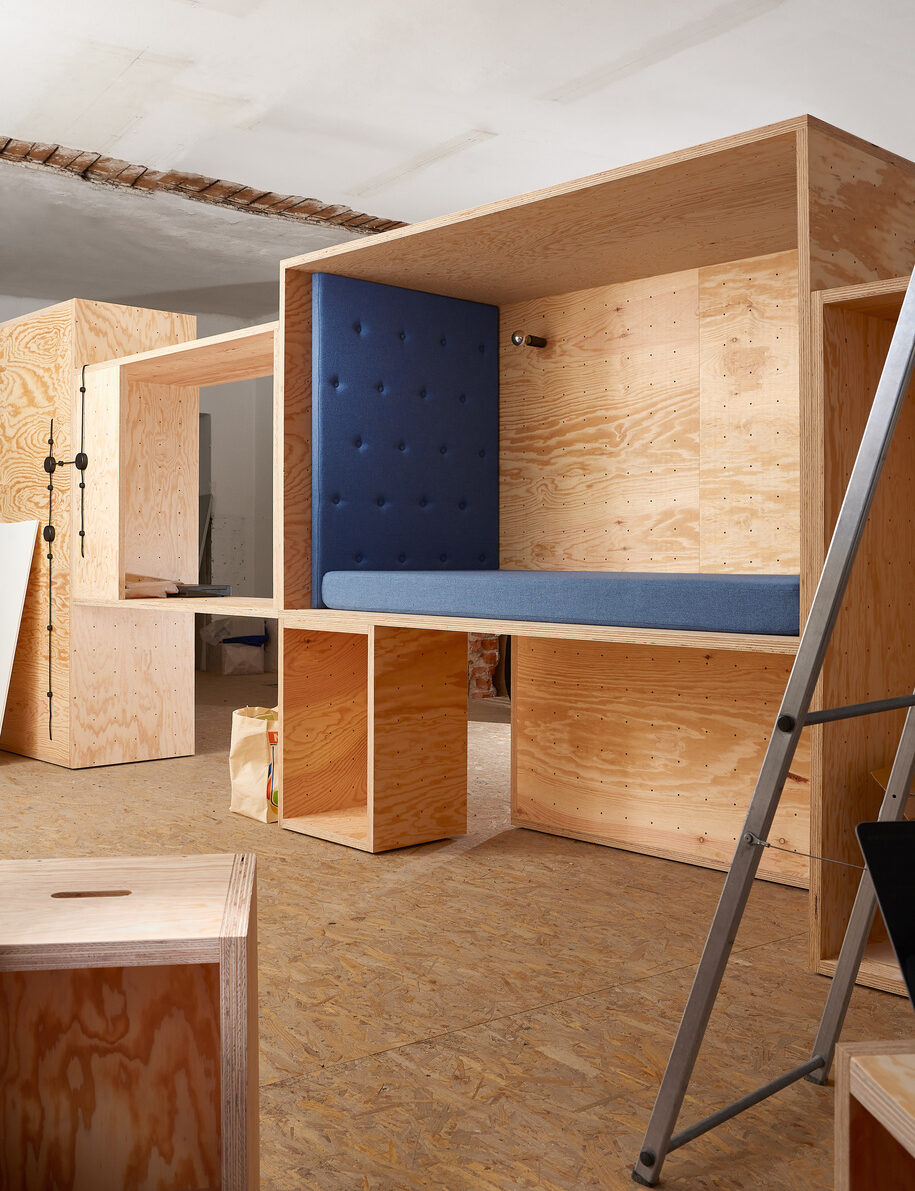
An extensive collection of modular furniture boxes made of plywood, which can be combined, mounted and stacked into horizontal or vertical structures
2.Lumitronome_by Martin Bricelj Baraga with BellaStock
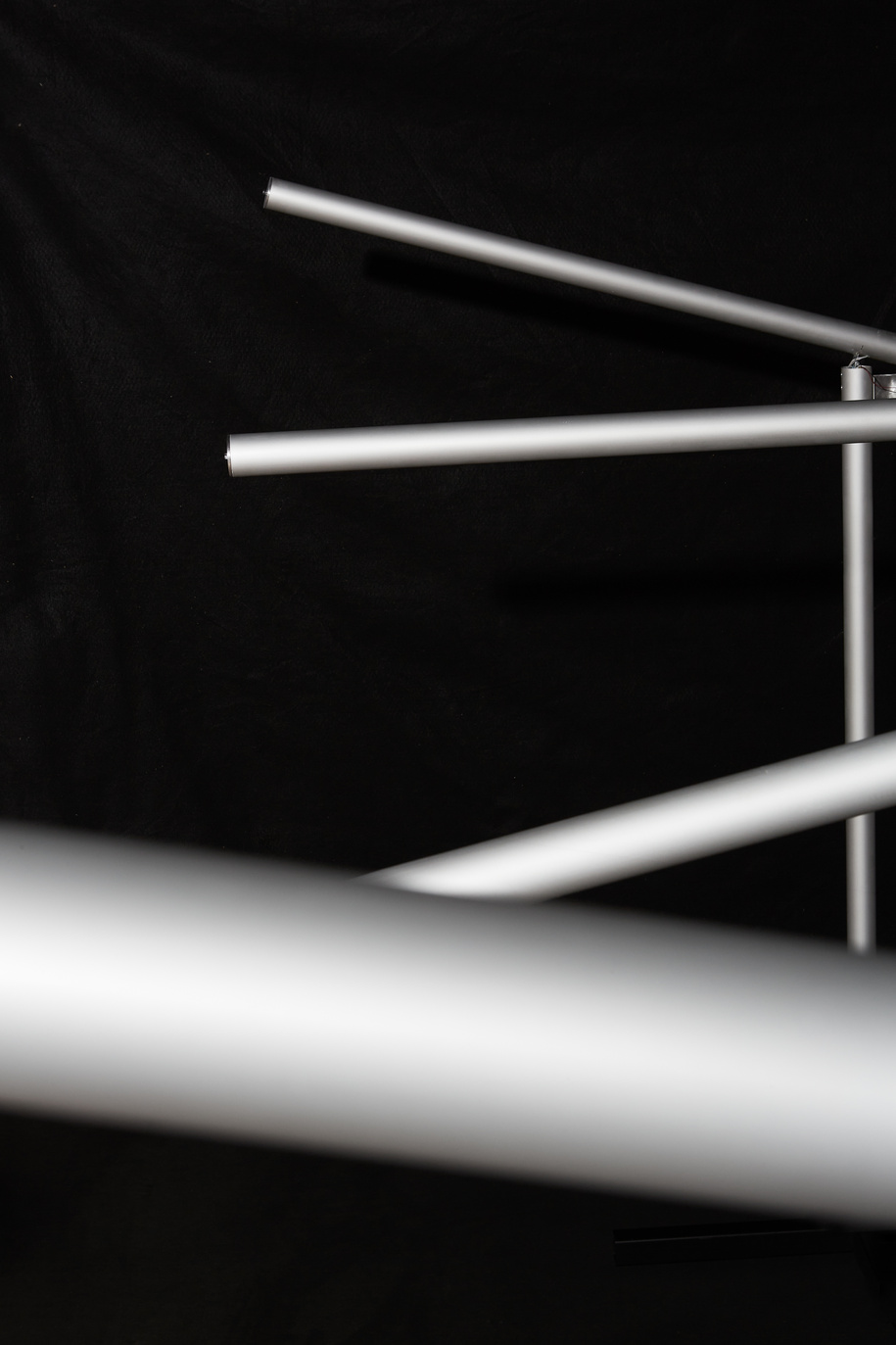
A series of kinetic lamps powered by solar energy that produces a slow and gentle sense of light in motion.
Lumitrons are designed as a luminaire for both various architectural applications or entirely natural environments.
3. Radiator Line_by Dan Adlešič
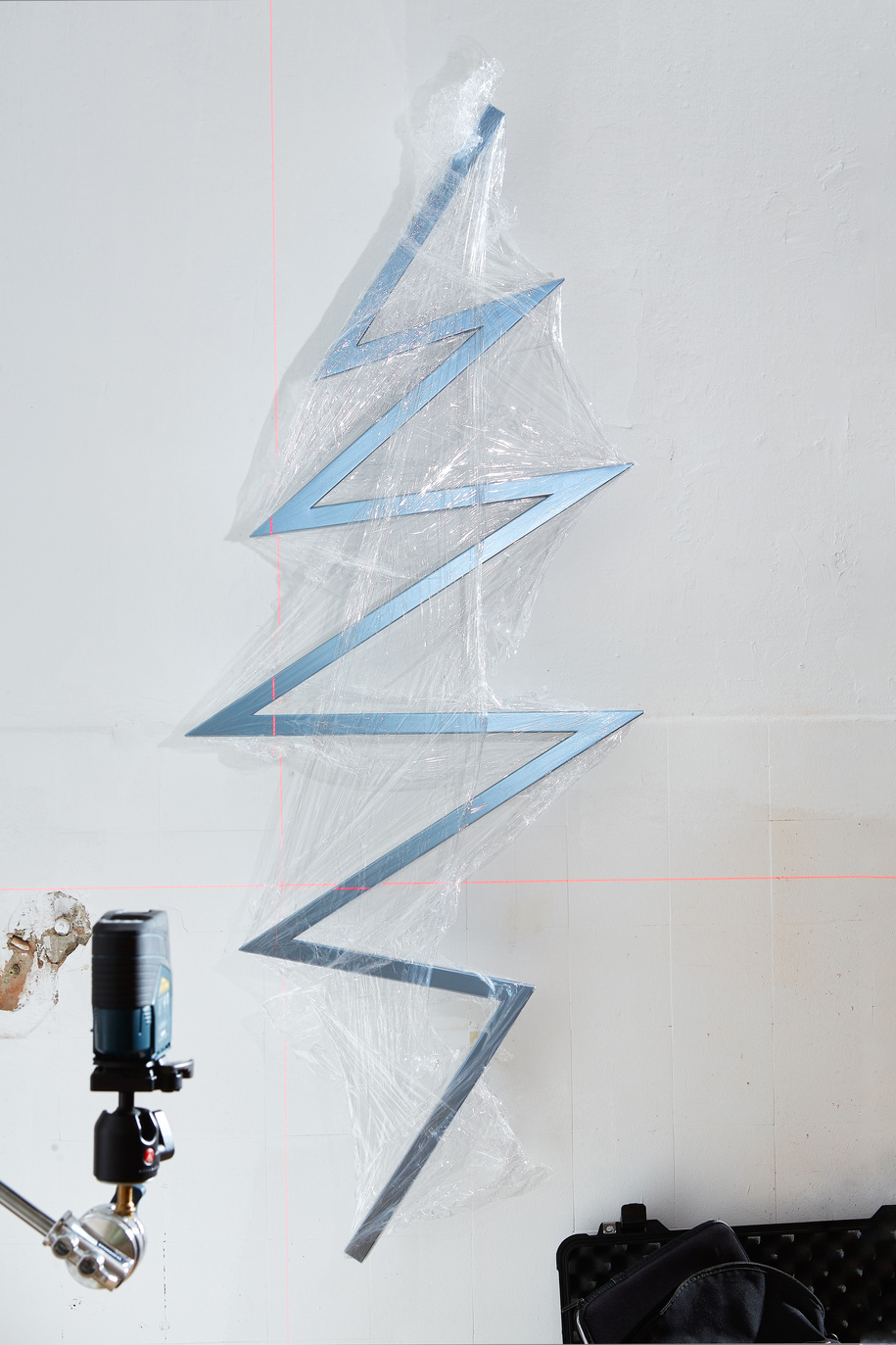
A square steel tube bent to form a continuous zigzag becomes a towel-drying radiator. This exercise in lockdown neo-survivalist aesthetics explores the sculptural value of a product that is often recognised as a non-design interior element.
4. Wicker Vision_by Darja Malešič
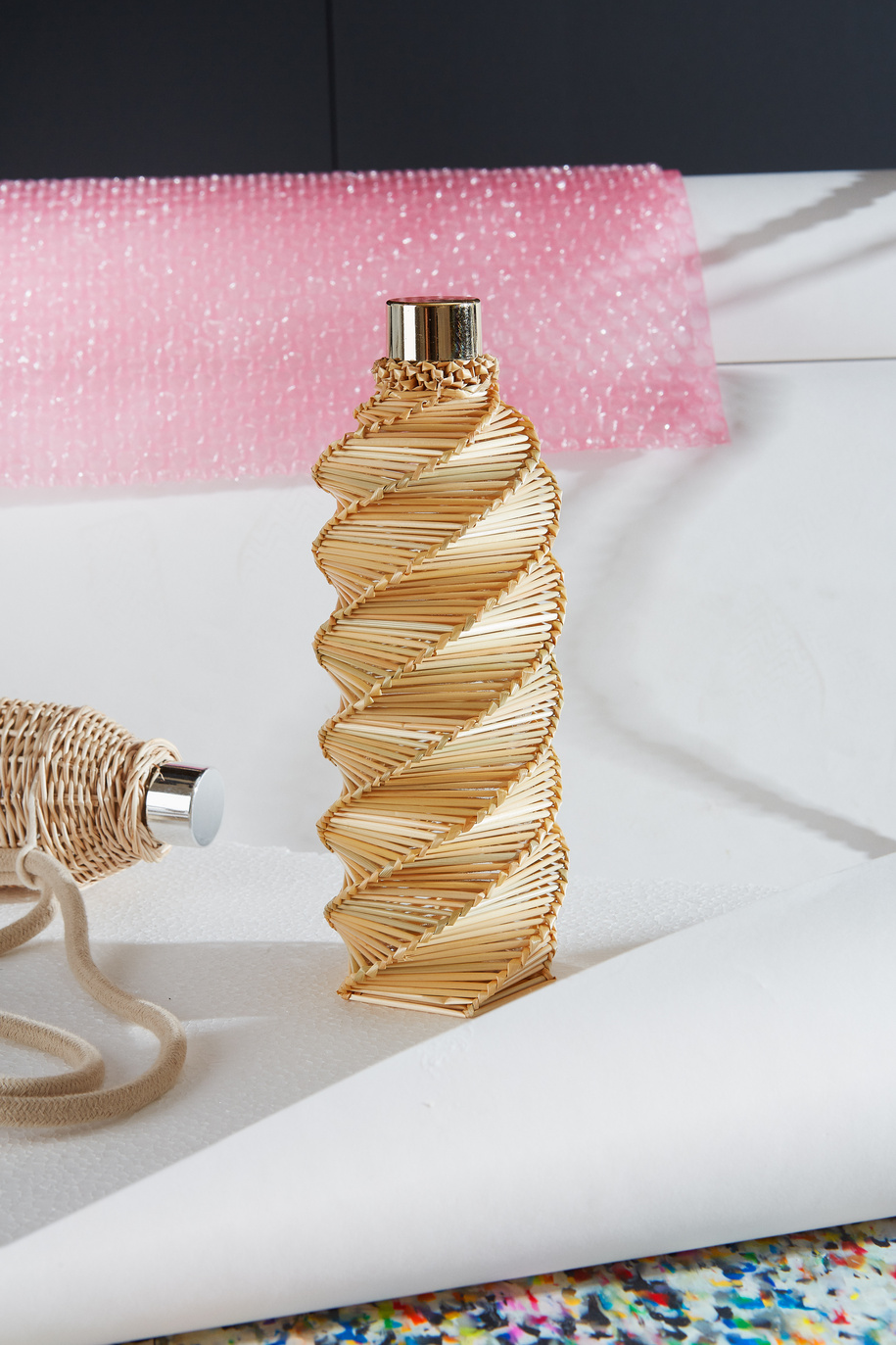
Collection of wicker water bottles, based on the traditional Slovenian craft of using local and sustainable materials such as willow, corn husk and straw.
5. Duavita & Shunga_ by David Tavčar
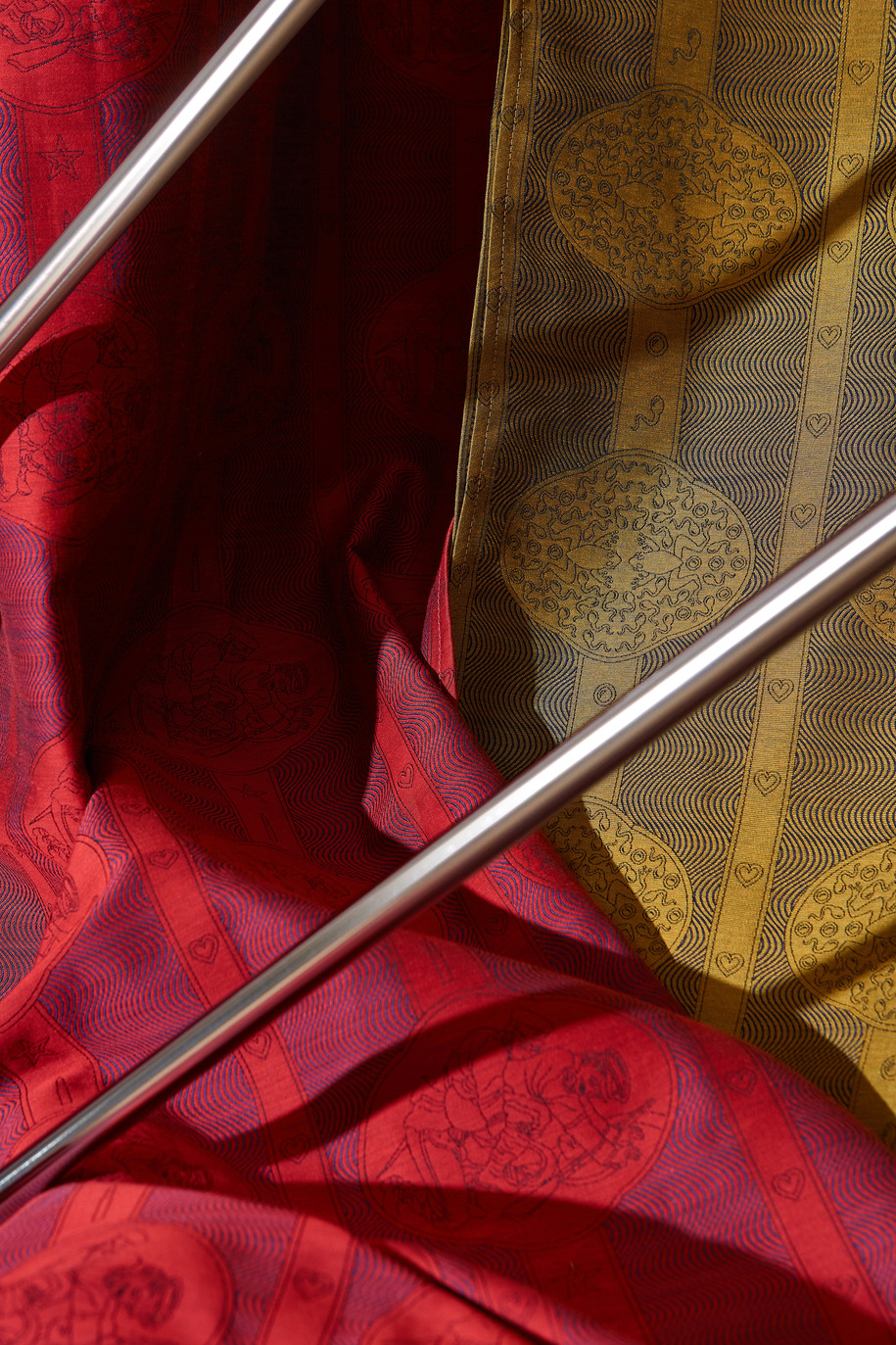
Playing with classic wallpaper design archetypes, the designs for this curtain fabric aren’t printed, they’re jacquard woven from recycled polyester.
6. Nicoless Backpack_ by Primoz Jeza Studio for Donar
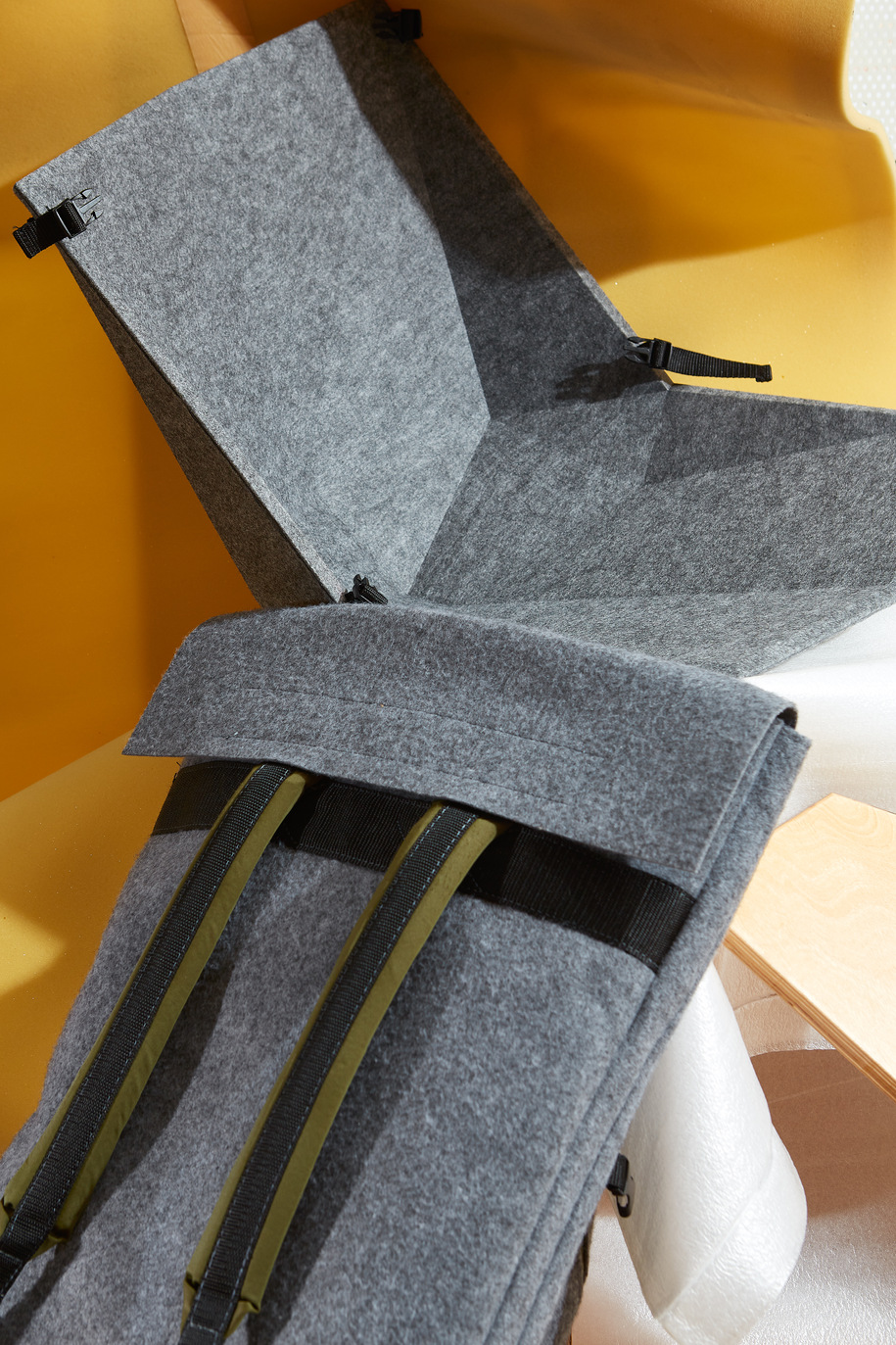
Mobility and real portability of this chair and backpack are ensured by a lightweight shell made of scrap felt (70% of which from recycled PET bottles) and two
folding plywood elements. Nicoless folds simply and easily into a functional backpack that has enough space to accommodate the needs of a mobile office and allows for an easy switch to a comfortable chair.
7. Paper + Bioplastic_by Eva Garibaldi
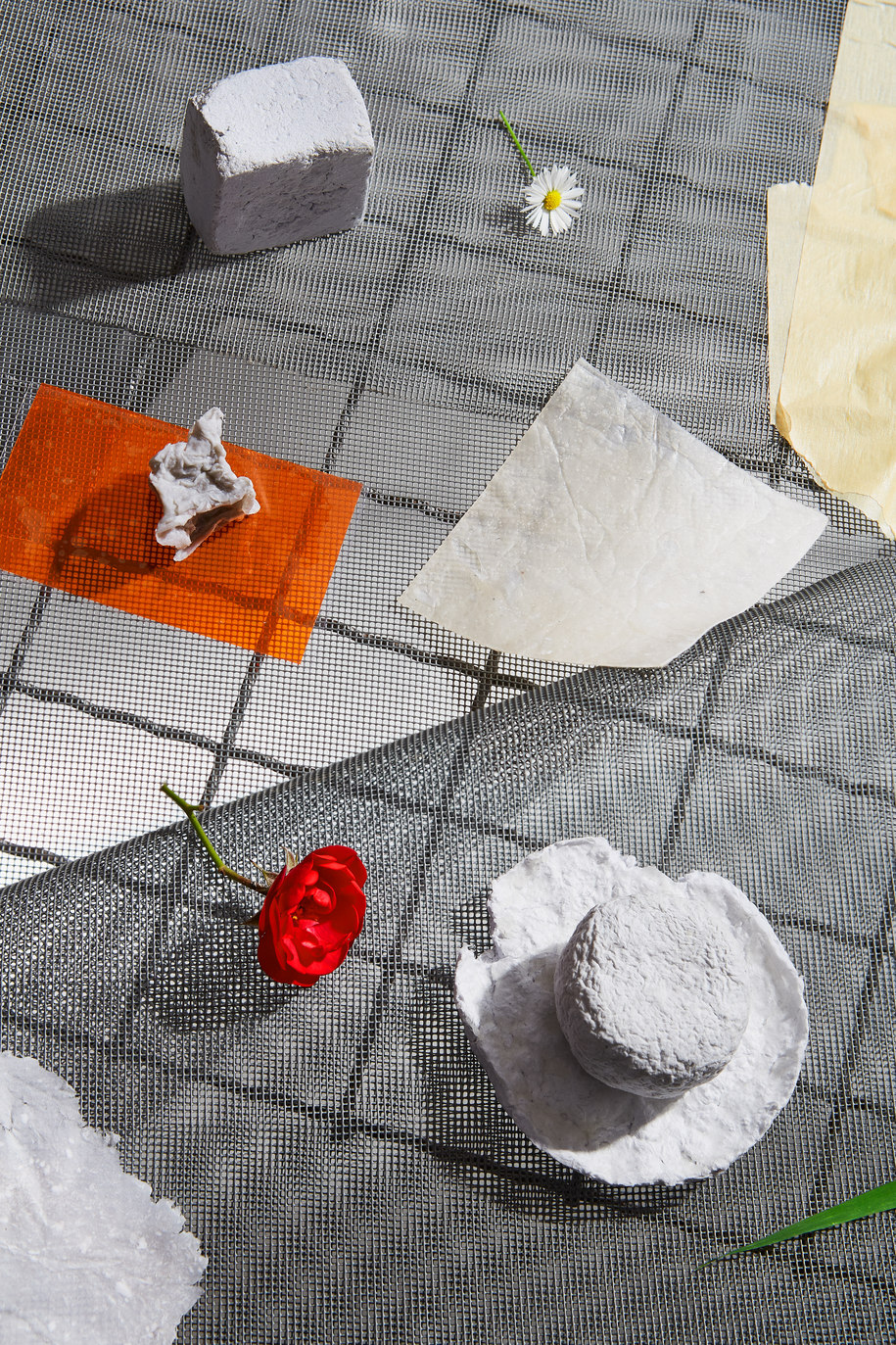
Bioplastic introduces users – through workshops and the Paper + Bioplastics book – to simple recipes that can be used to prepare new materials from paper that’s nonrecyclable.
8. Henhouse_by Gašper Fabian, Atelier
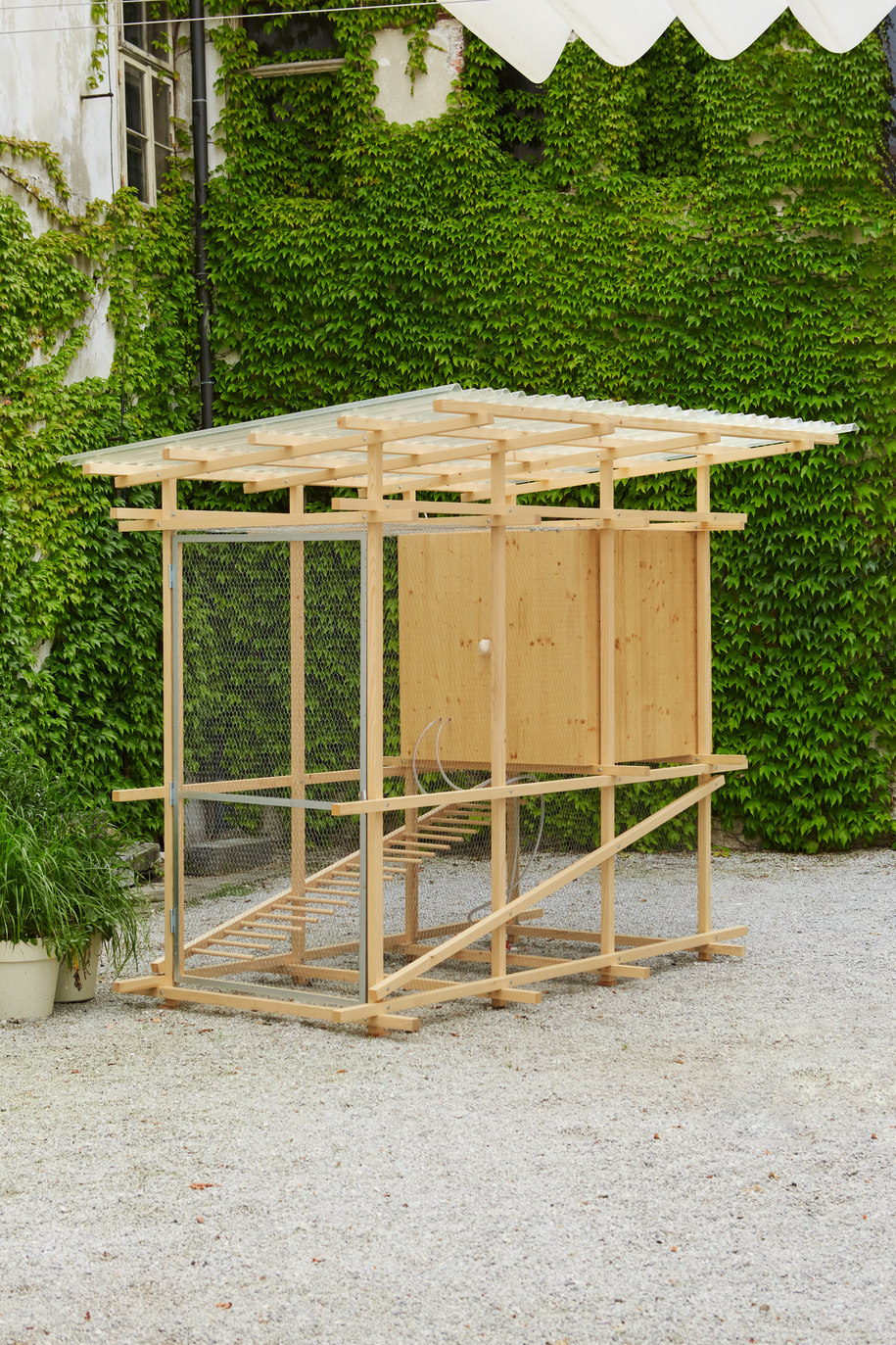
This is a henhouse for architectural enthusiasts! The minimalist wooden construction of the henhouse, which is surrounded by a simple metal mesh, takes its shape
from the golden section.
9. G_by Grupo H
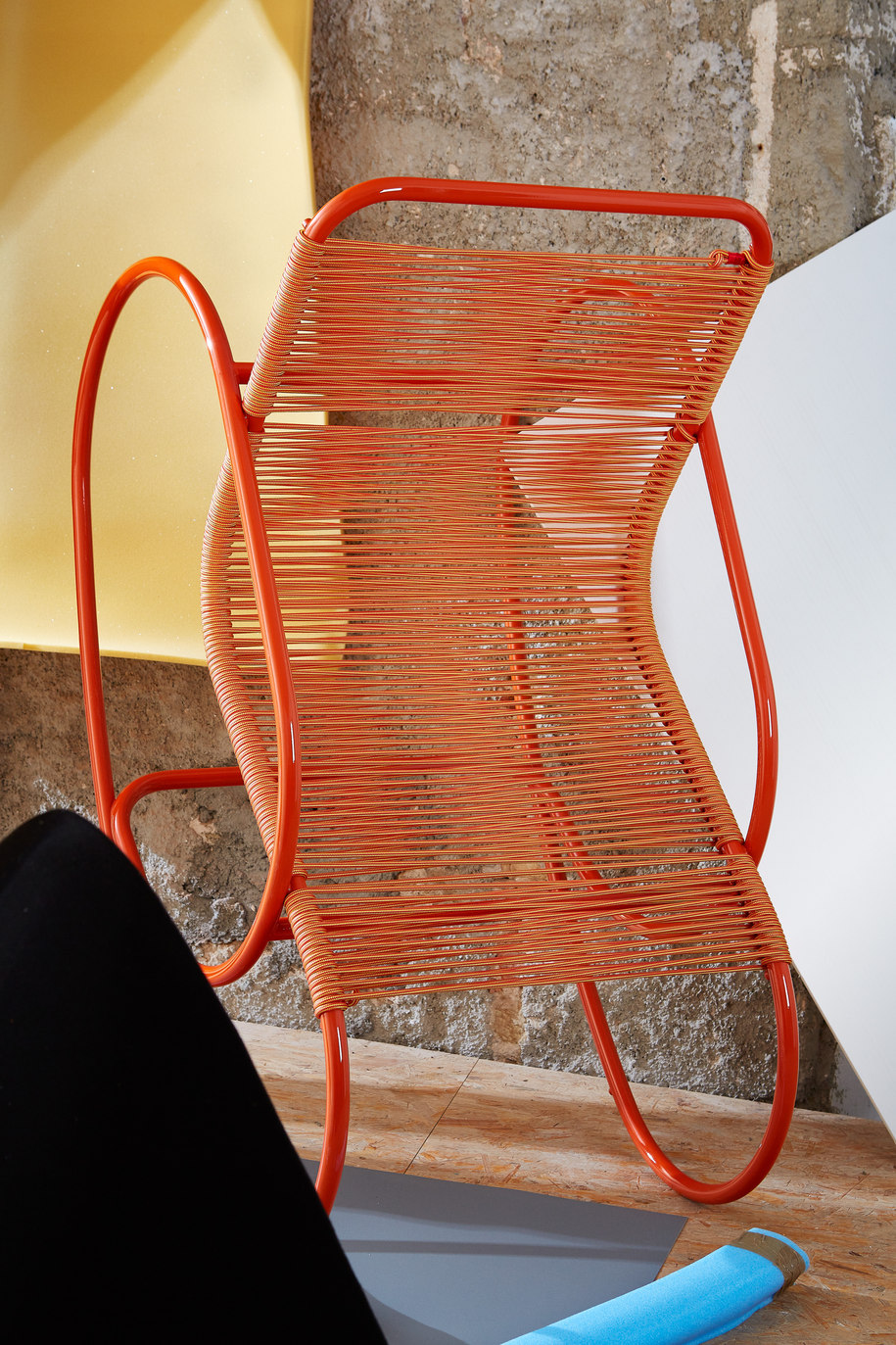
A simple rocking chair made of tubular steel bent into elegant curves. The seating element is formed by stretching the rope between the tubular structure. The user is able to repair or substitute every part of the chair and extend the piece’s service life, making it a lasting and sustainable item.
10. Wavy_by Iztok Lemajič, IDFL
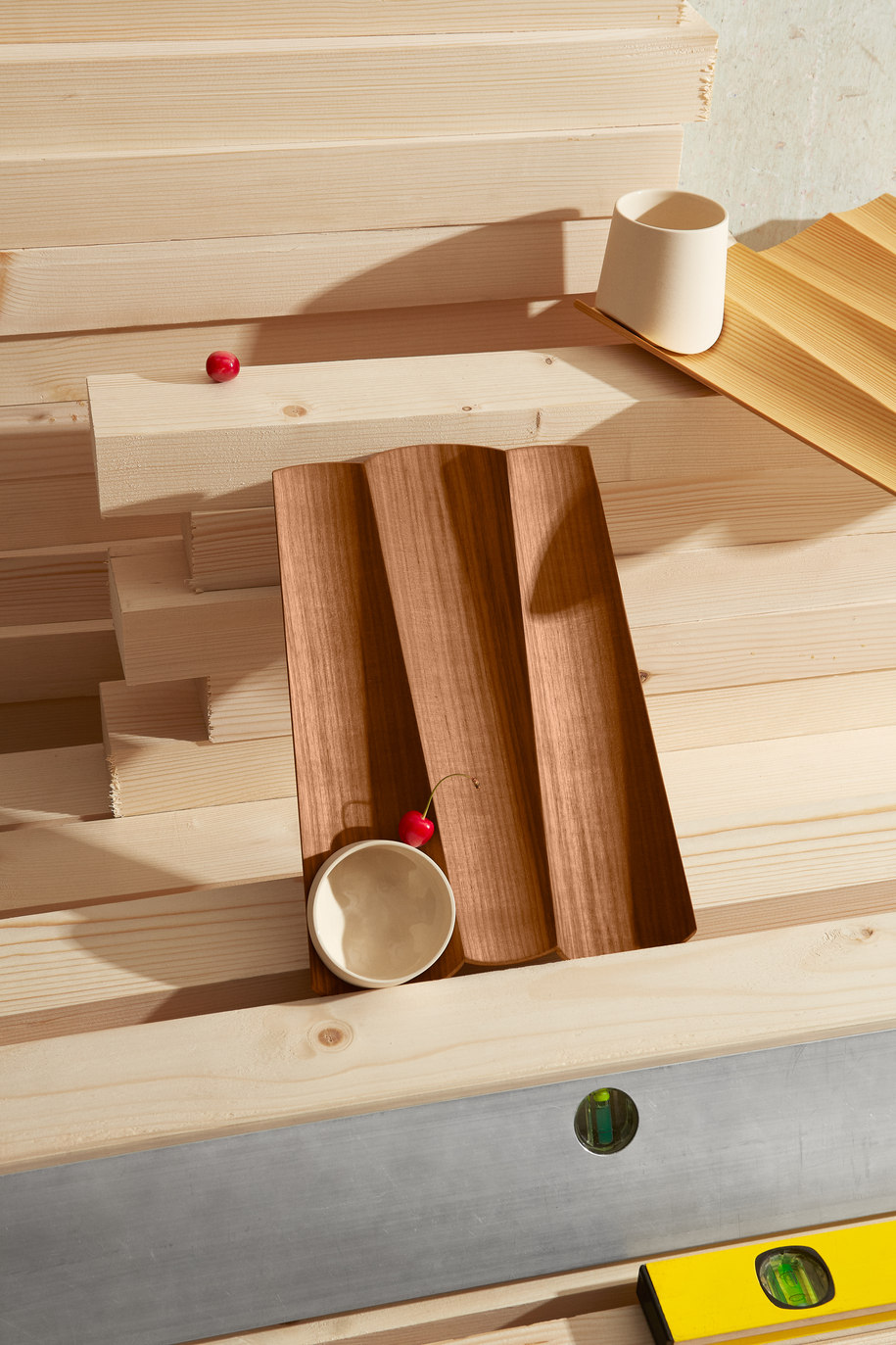
A serving tray inspired by the Slovenian landscape. Basic materials like wood and clay are closely connected with, and actually taken from the landscape: larch, ash,
oak or maple wood from the Slovenian forest, treated with natural oils, and clay from the good earth below.
11. Eli_by Kofein Dizajn
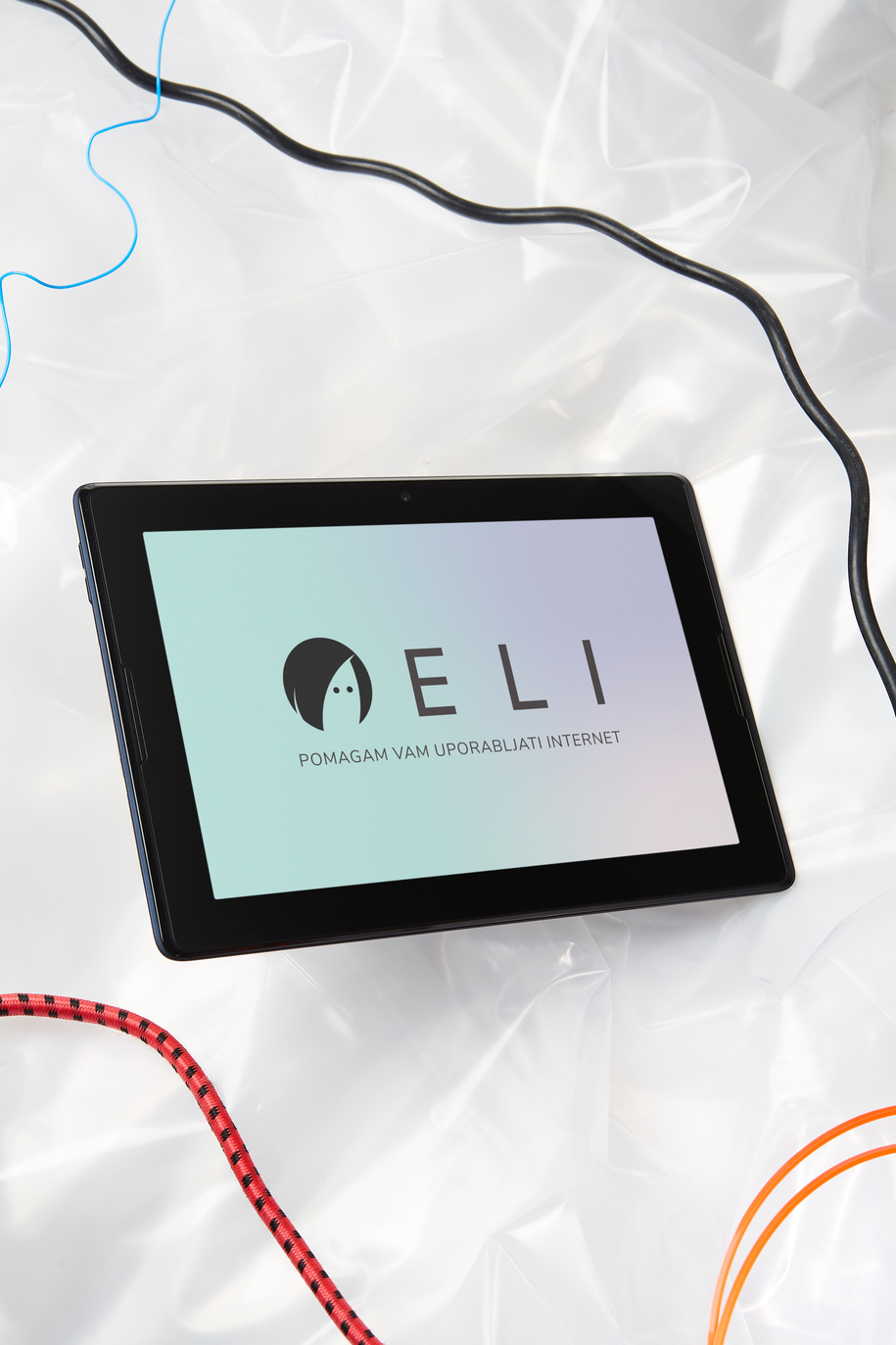
An online assistant for people with memory disorders. Eli aims to bridge the personal, technical and social constraints involved in trying to enjoy the benefits technology can bring to older people’s lives.
12. Adapt_by Kronoterm
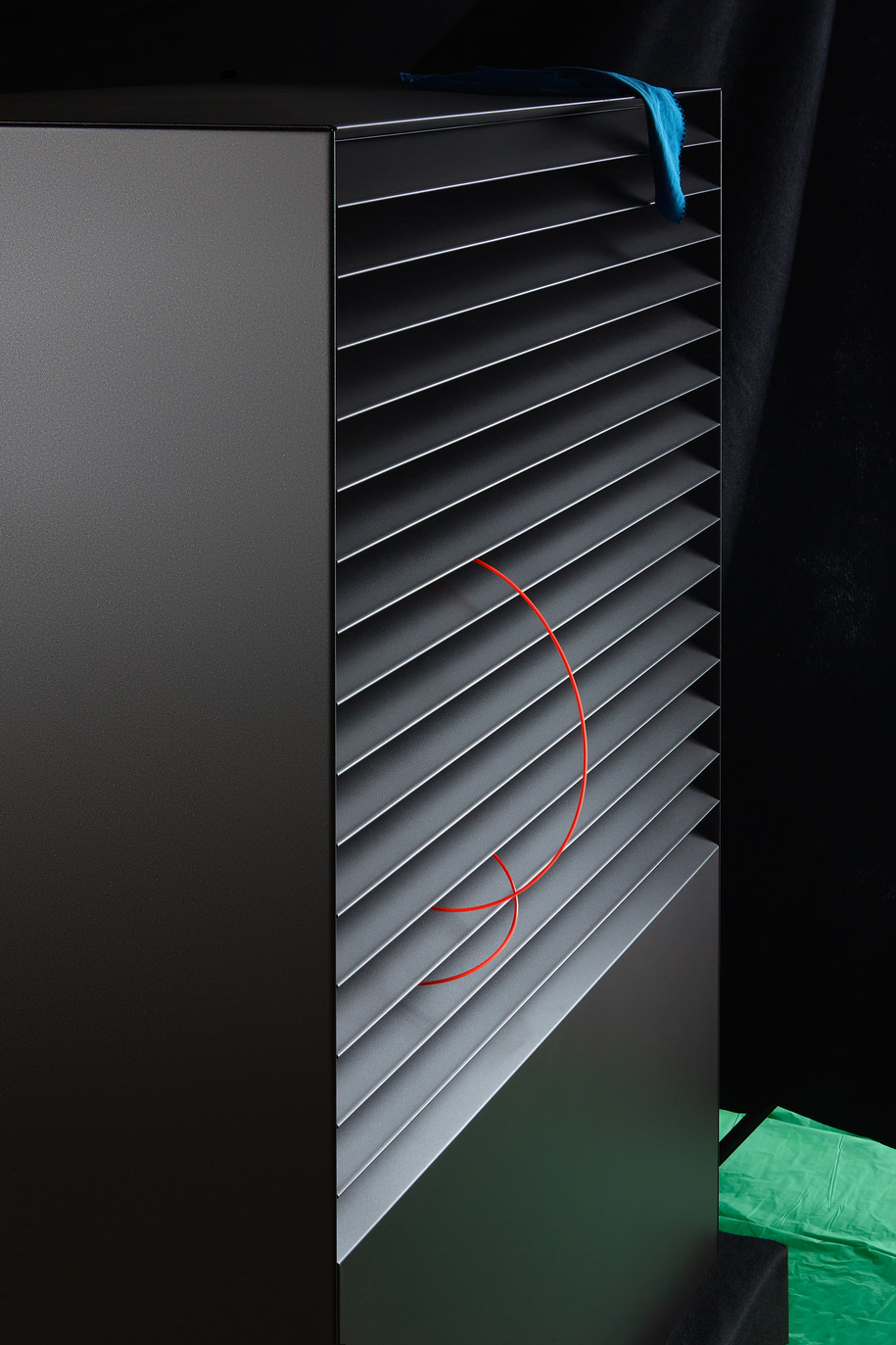
High-tech, powerful performance and high-efficiency heat pump.
13. Stellar Luminaire by Wa—t_by Janez Mesarič, Mashoni Design Studio with Indata
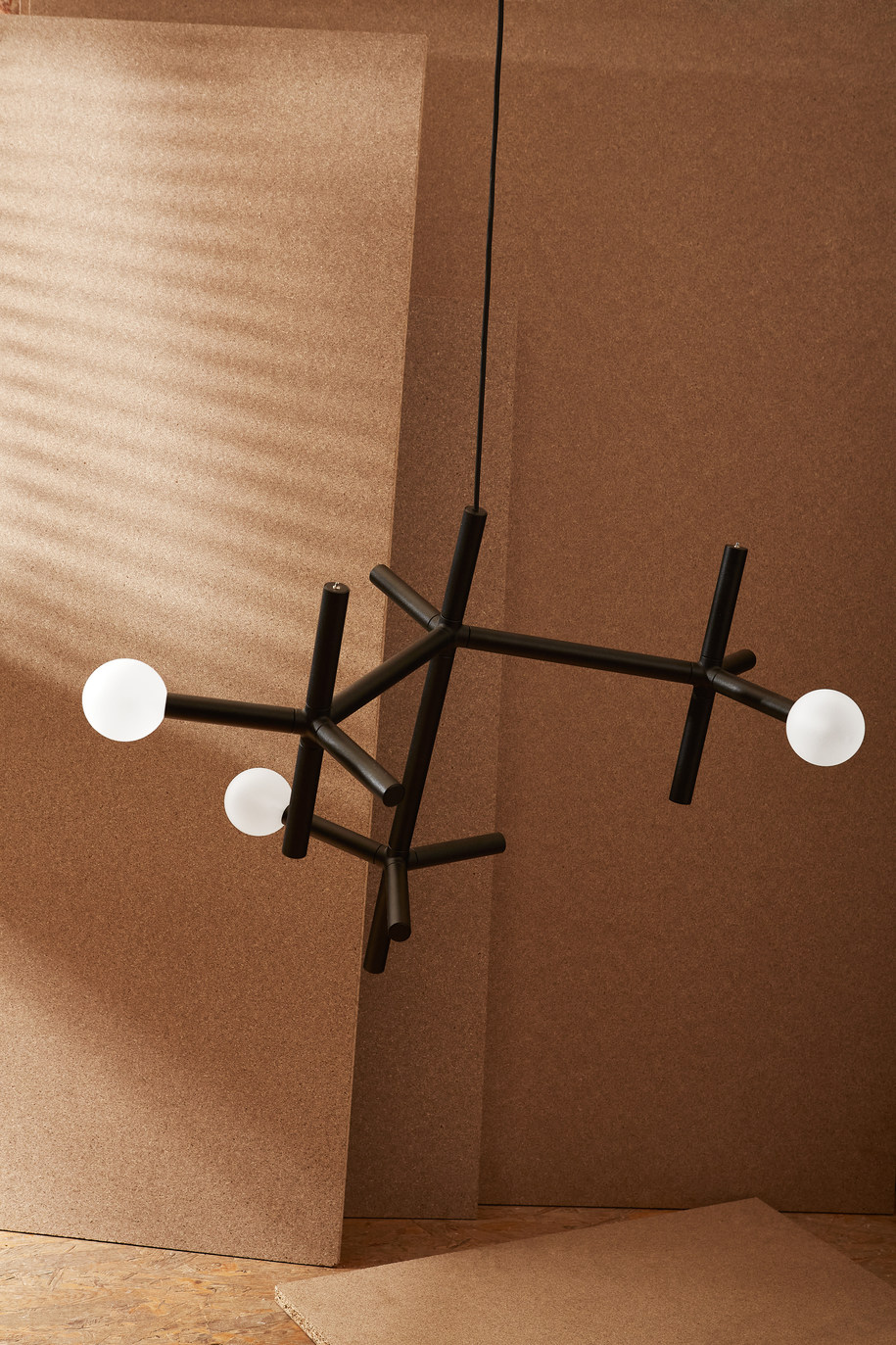
Modular LED lighting units that can be combined for any number of compositions. The design combines any number of modules with two types of LED units – a spotlight that provides direct illumination, and a glass globe with soft, dispersed illumination.
14. Lighthouse_by Matej Štefanac
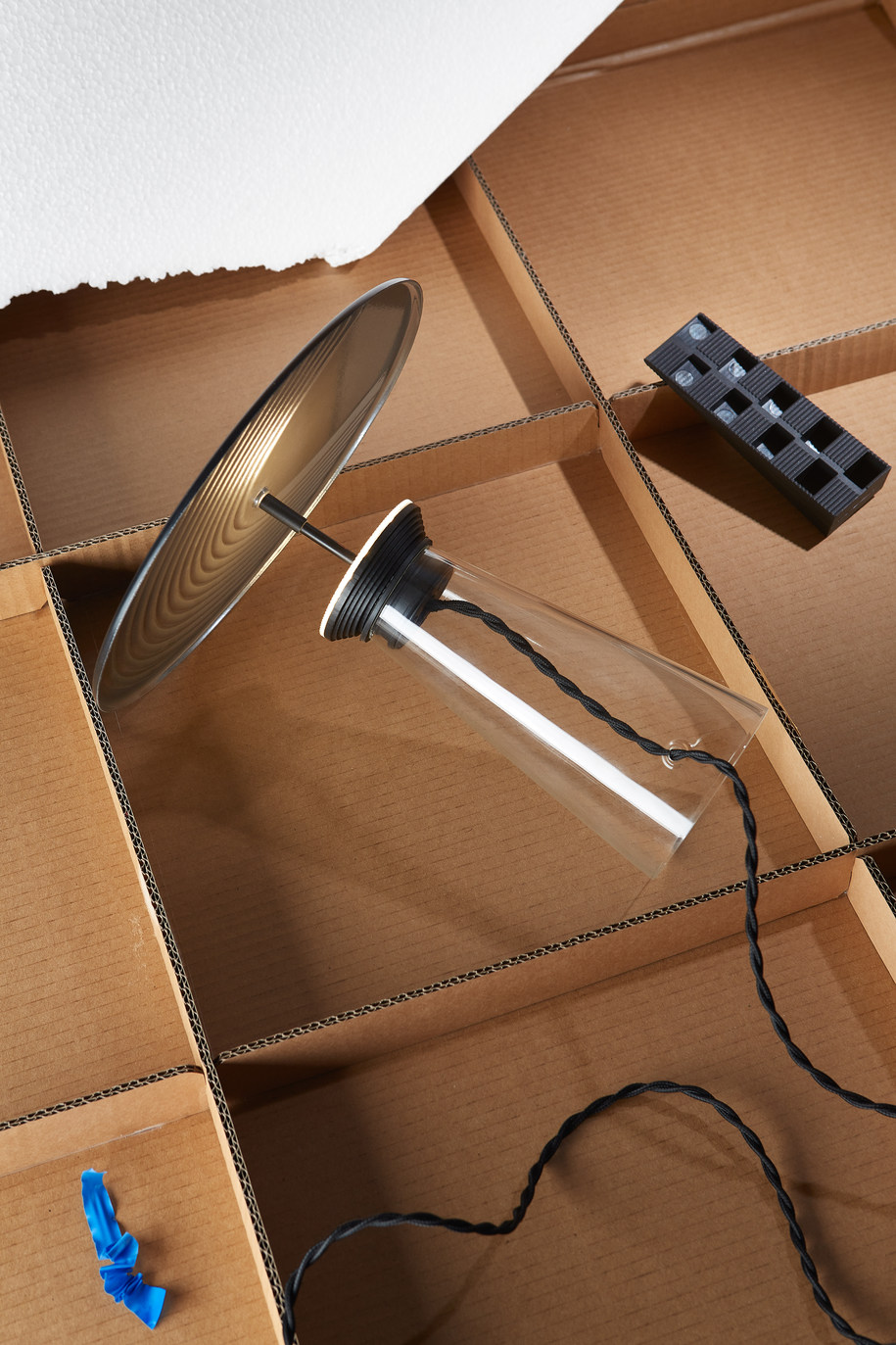
The multifaceted surface of the reflector – made from moulded and polished thin aluminium sheet metal – “bends” or redirects the light from the single LED light
source and focuses it in a single direction, instead of dispersing it all over the lit surface.
15. ETAT Collection: Serial no. 003_by Monochrome Architects
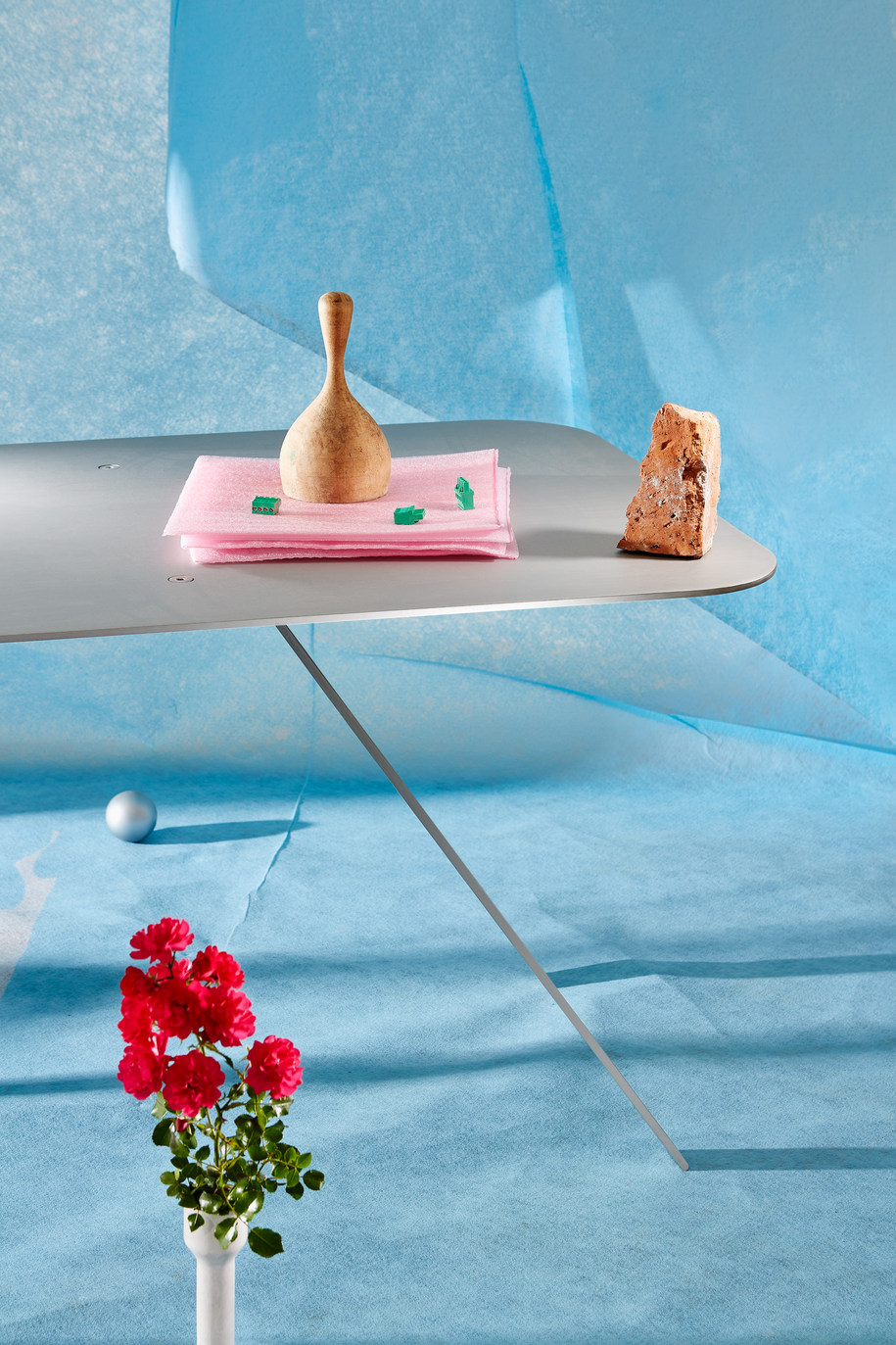
This side table is a prototype for use in a private flat, designed as a multi-purpose piece using a minimum of material. It’s made from one sheet of 5 mm-thick aluminium.
16. Soothing Stool_by Peter Štrukelj
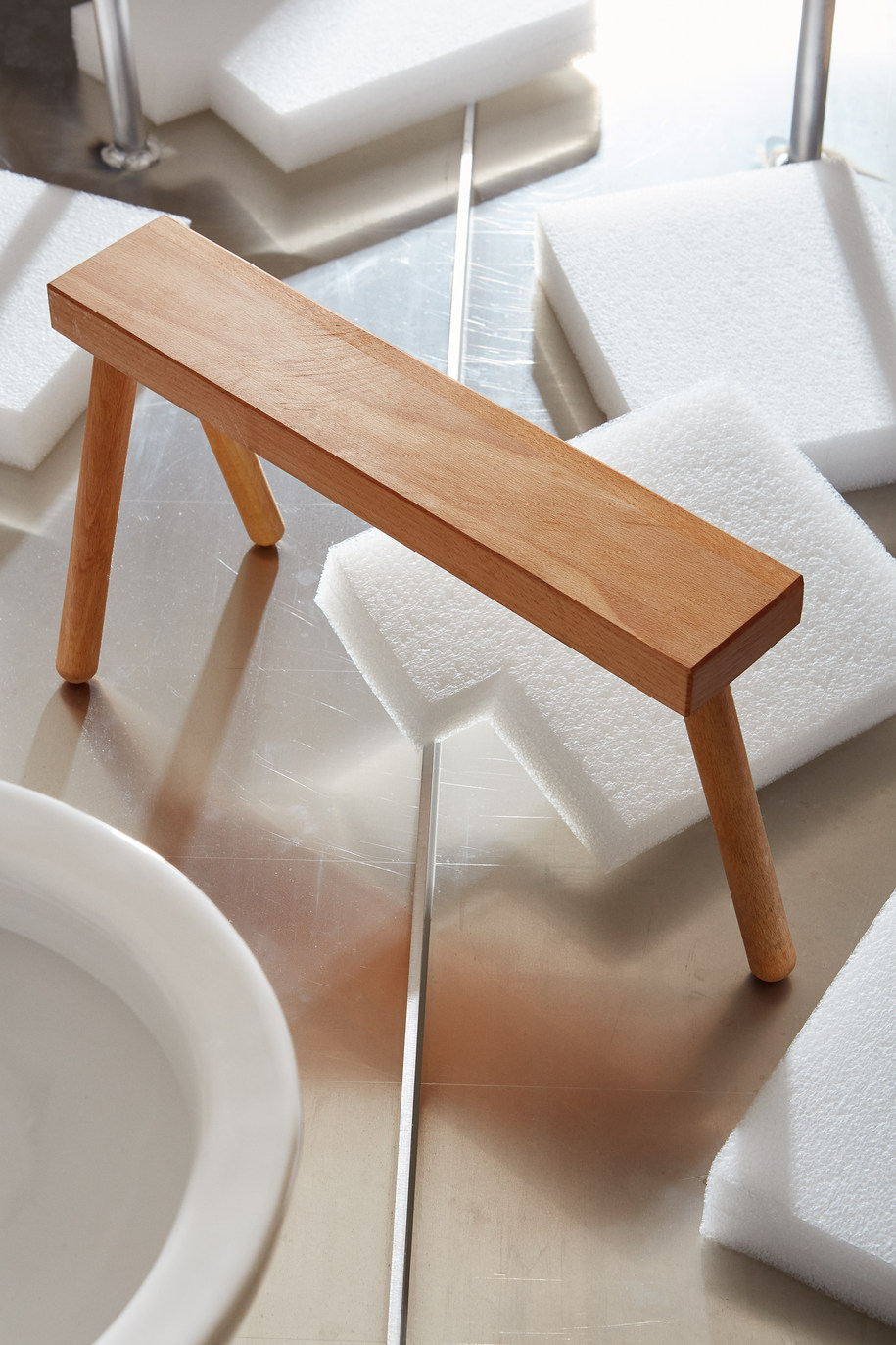
The Soothing Stool helps our daily excretion by raising the feet well off the ground, transforming our poor posture into a healthy and streamlined squat.
17. Pitstop_by ADDiD Plus
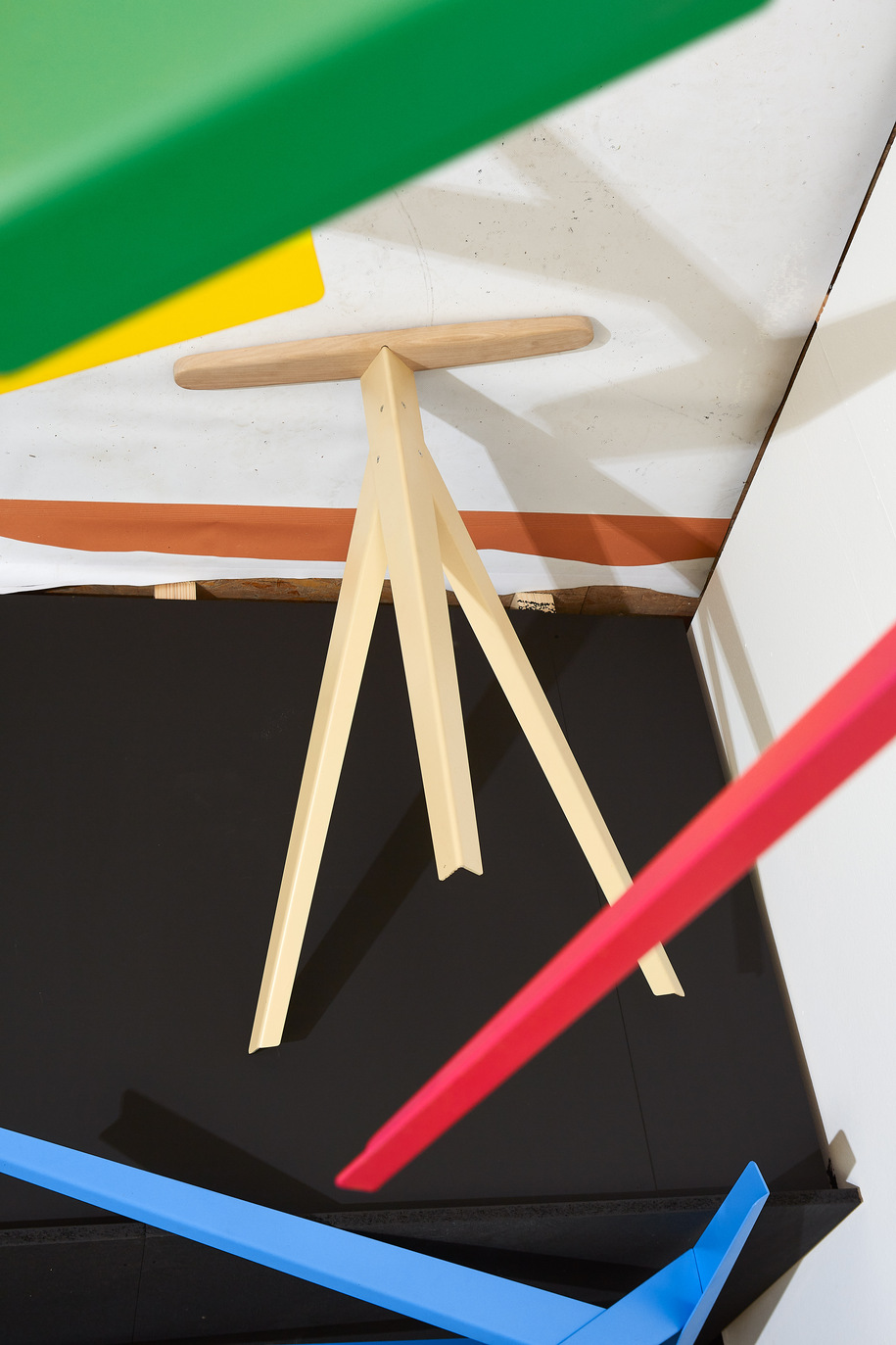
Pitstop offers the user seating for a limited time. As the Pitstop provides only a minimum of support it encourages people to stop sitting and move.
18. Concrete Garden_by Tina Rugelj
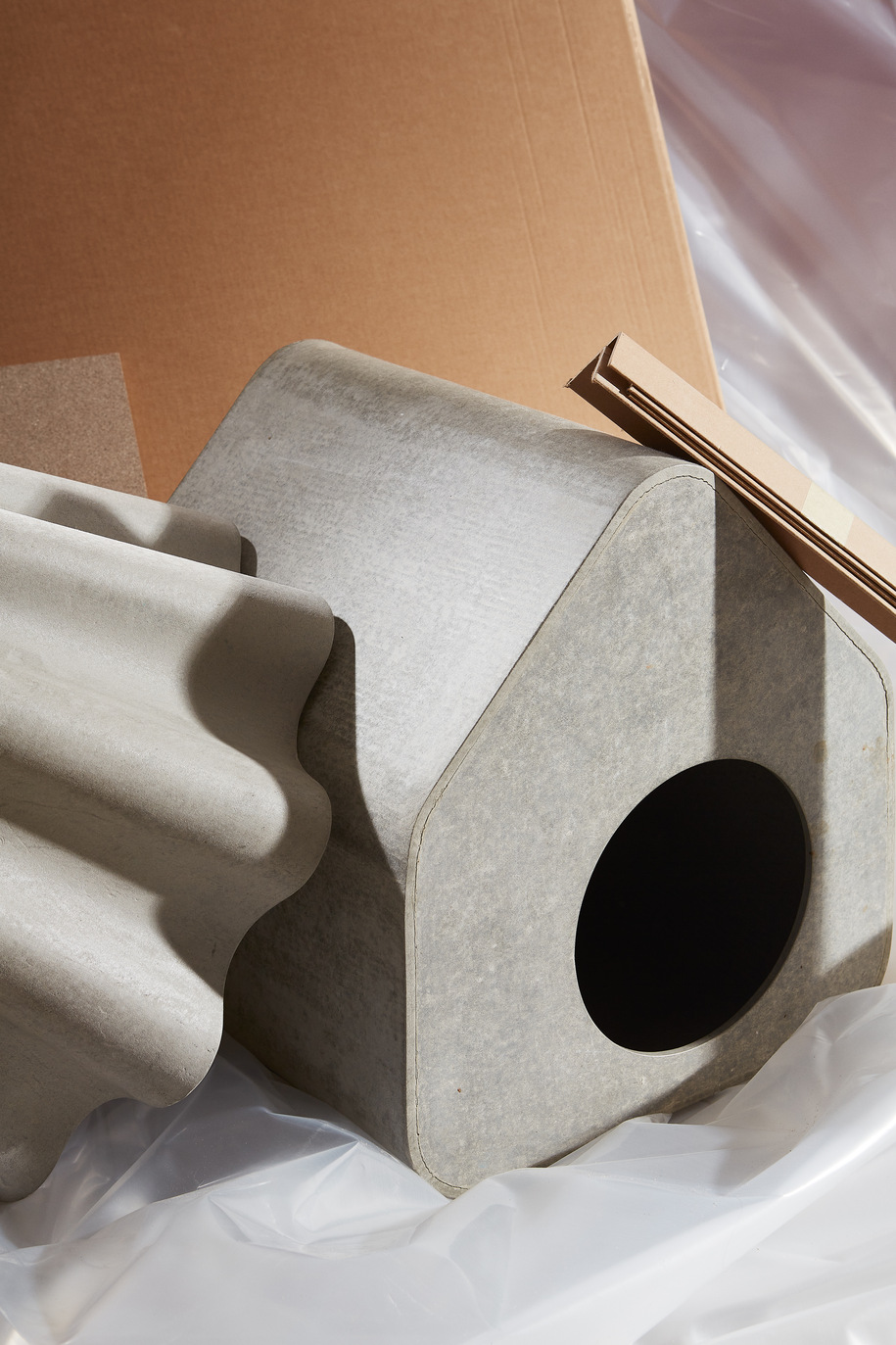
A line of fine outdoor furniture made of natural fibre cement, light, durable, weather resistant and with a service life of at least 60 years.
19. Gift of the Future_Tina Košak Koren, Zavod Floios
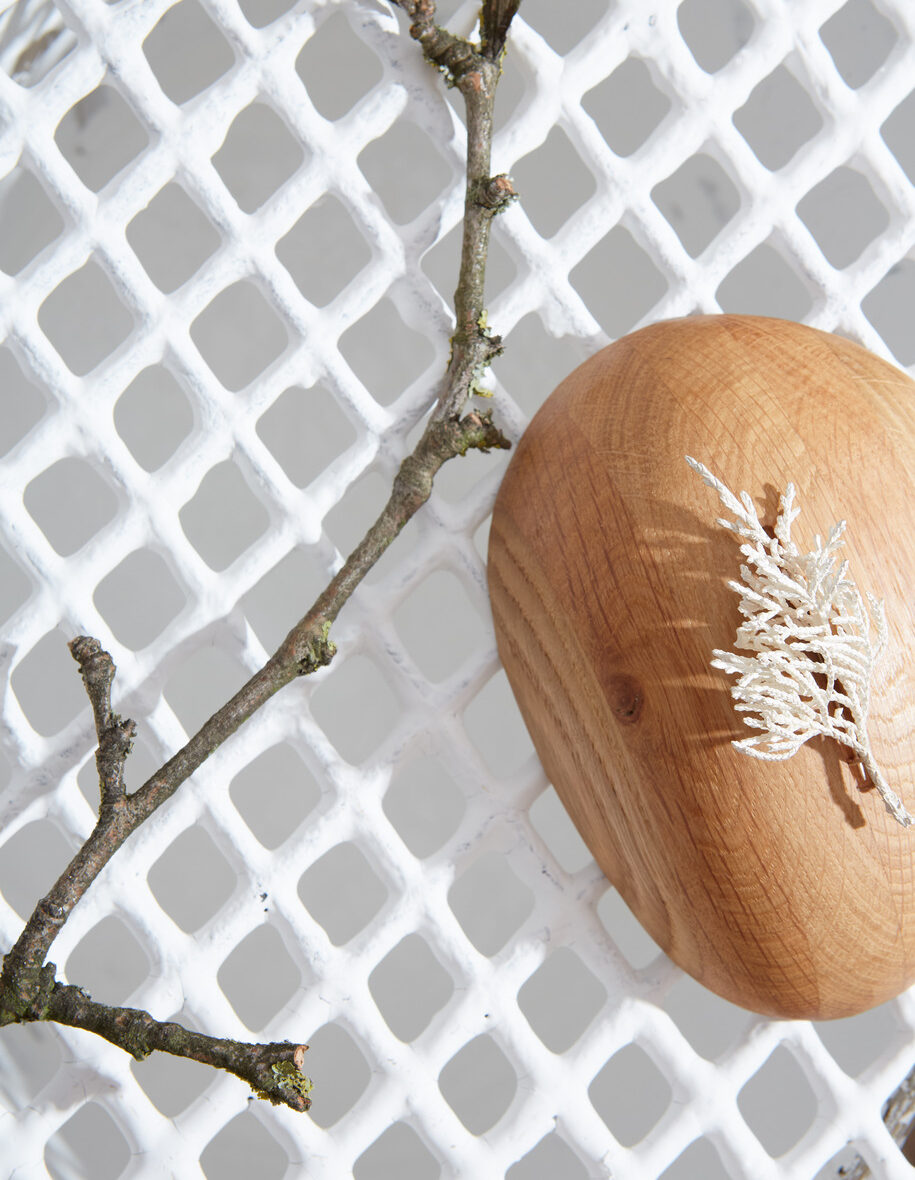
Handmade sustainable jewellery from recycled silver recovered from electronic waste. All the objects they produce are precision 3D scanned and can be produced
in larger series.
20. Cloudy_by Tanja Pak
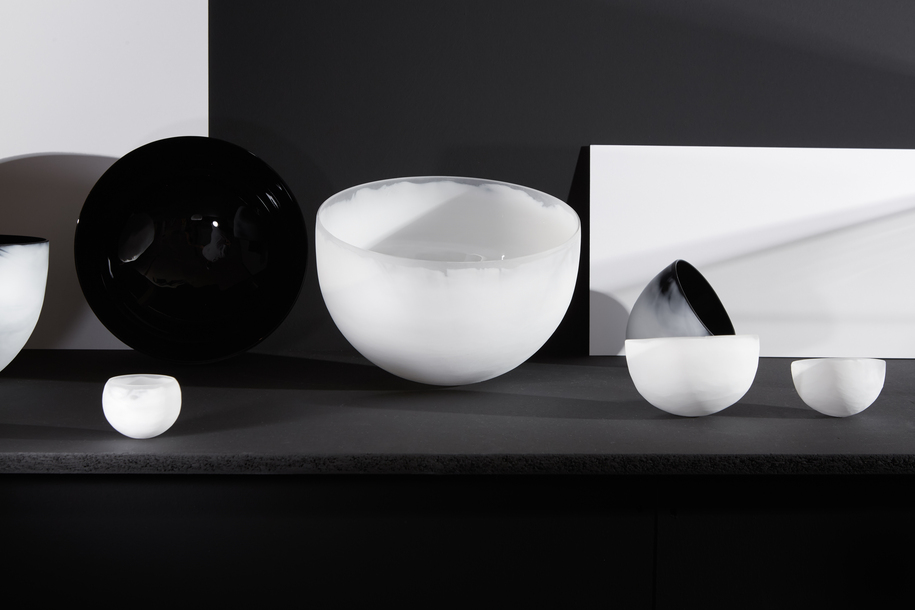
Double-layer hand-blown glass cups produced in two different colour combinations – black and white, and colourless/transparent with white.
Executed in small-scale production using moulds, using manual blow-moulding technique.
21. Cutting Board & Drawers_by Studio Moste
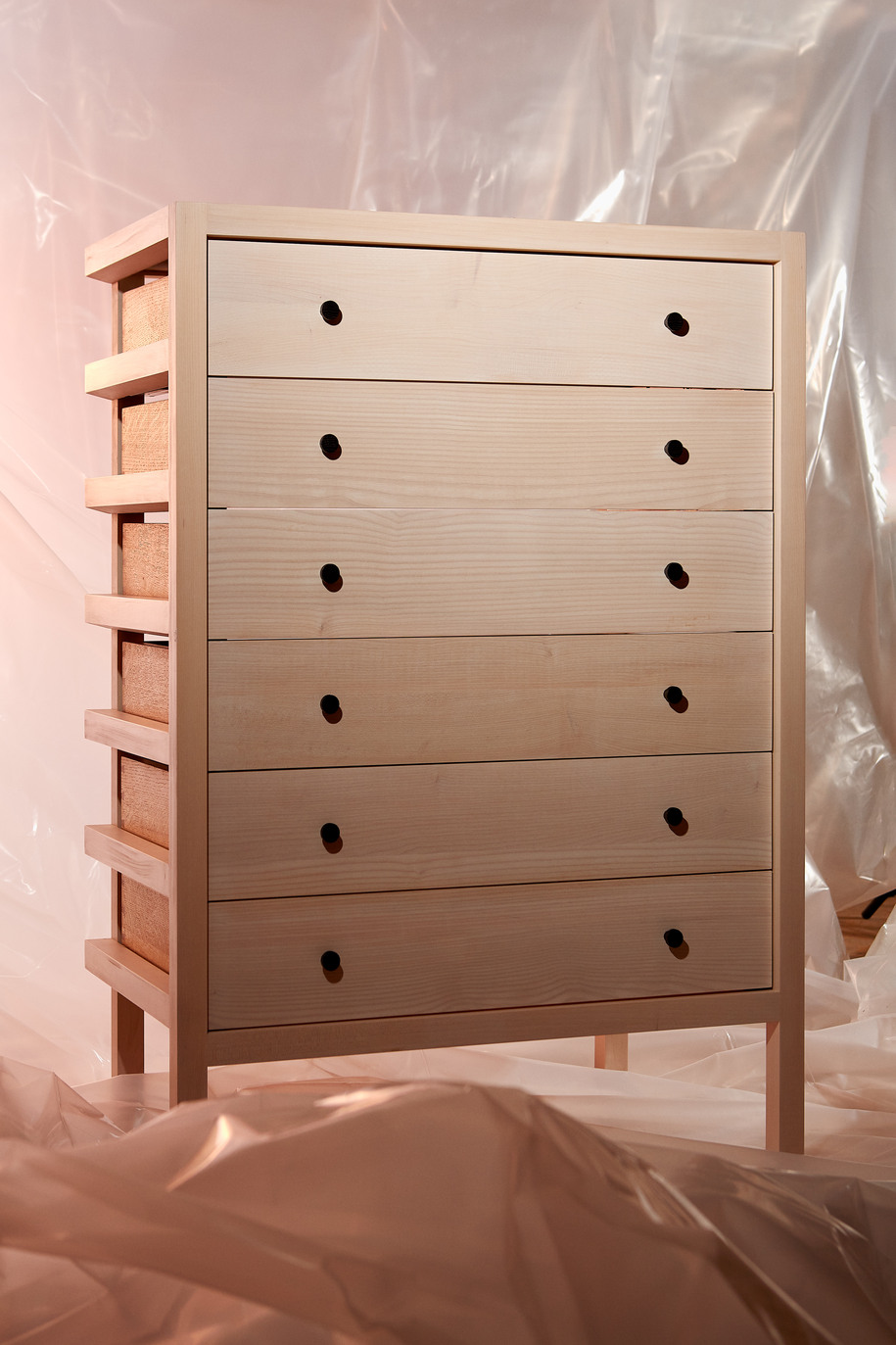
A butcher’s block cutting/serving board made from cubes of red oak, left over of the production of furniture like the drawer unit. Both are produced and handmade by Studio Moste.
22. Everglow_by tojo.i.to
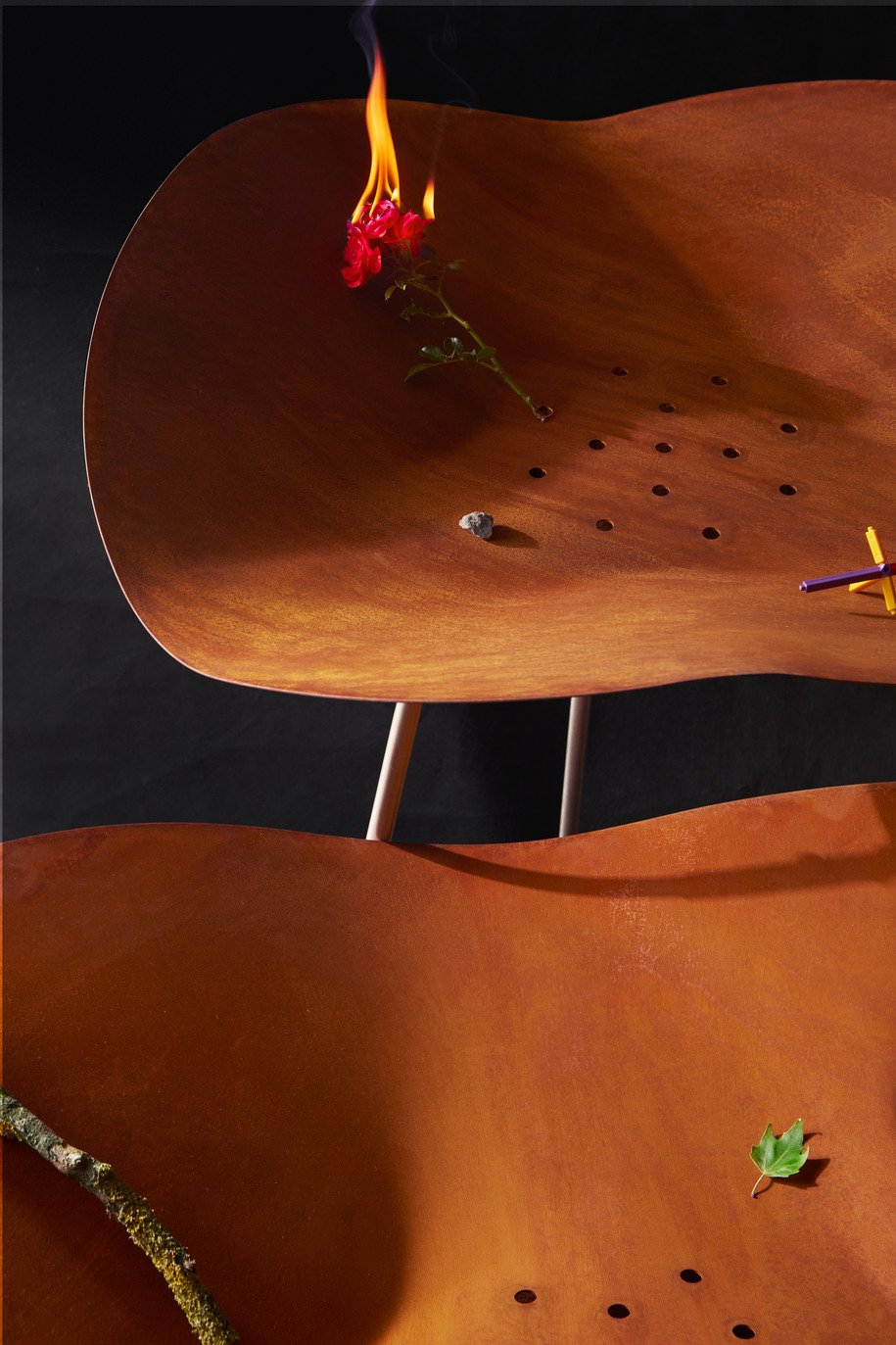
A simple garden fireplace constructed of ordinary sheet iron, prone to rust. Can be used for grilling and cooking.
23. DIY Furniture_by Trajna with Matija Biloslav Milkovič and Katarina Lampič
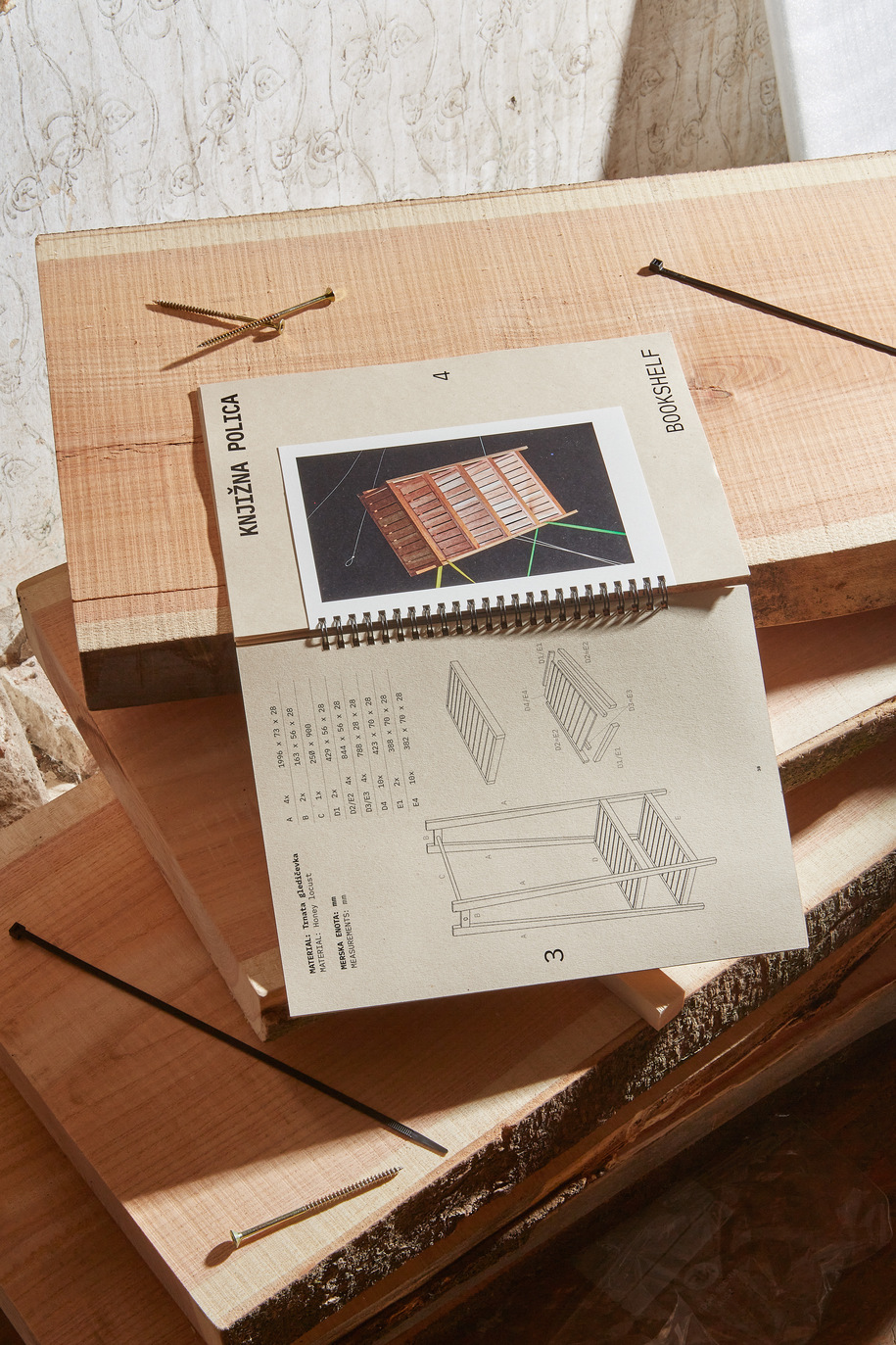
Gleditsia triacanthos is the Latin name for the invasive honey locust, which instead of strangling and killing off traditional native species is being used by Trajna to make DIY furniture (dining table, desk, dressing cupboard, bookcase).
24. Oli_by Veronika Rožmanc
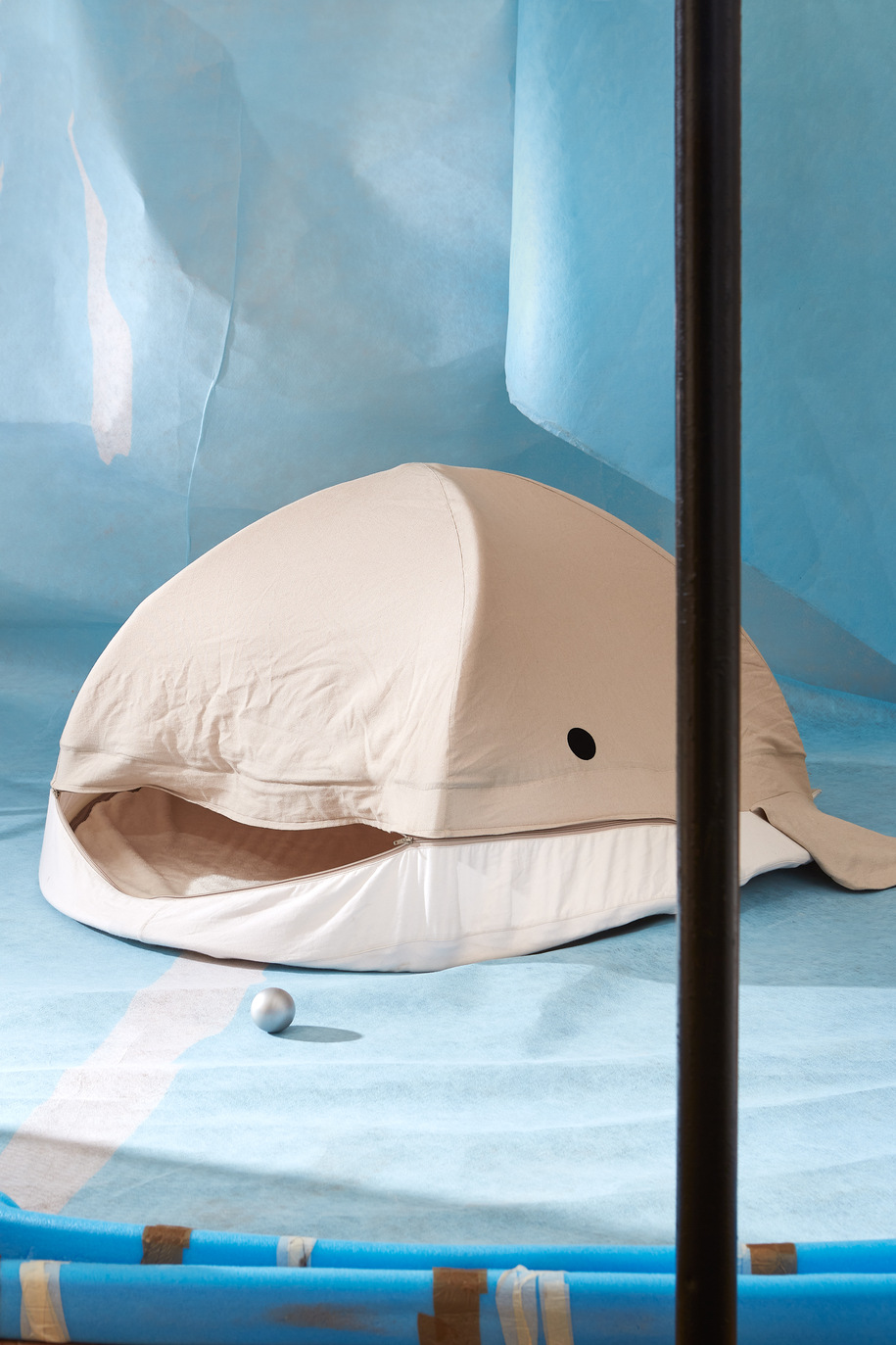
Oli is a children’s tent. It’s a fun and cosy place for kids to hide and play in. They can even write or draw on the interior walls. The tent can be transformed into a cosy
blanket too.
25. Vulgaris XII Wine Studiolo_by Vulgaris
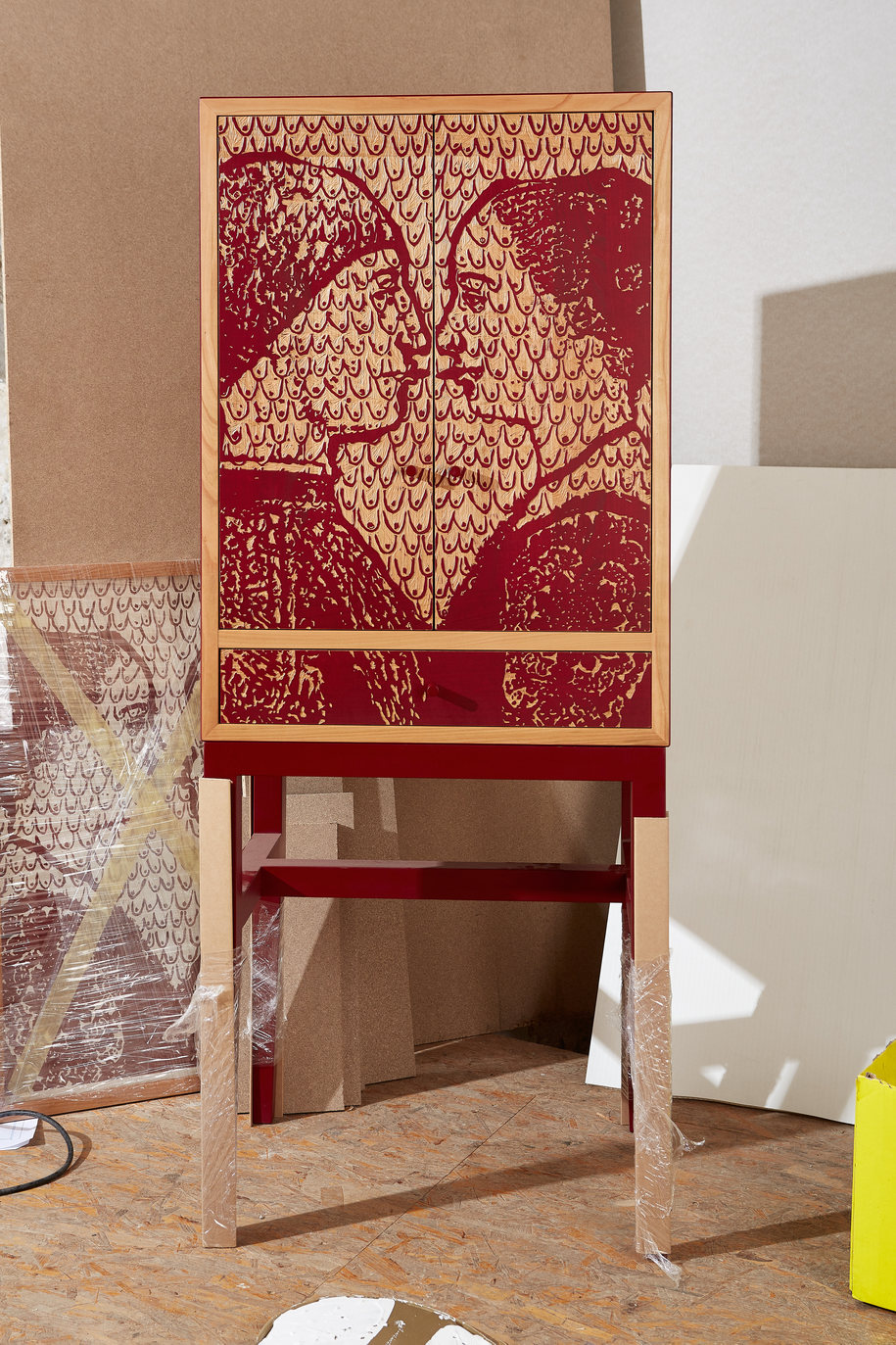
A free-standing wine cabinet, wine glasses and related utensils, accompanied by an artistic woodcut.
26. Kubis_by Matic Komel, Lara Baler, Boštjan Kopinšek
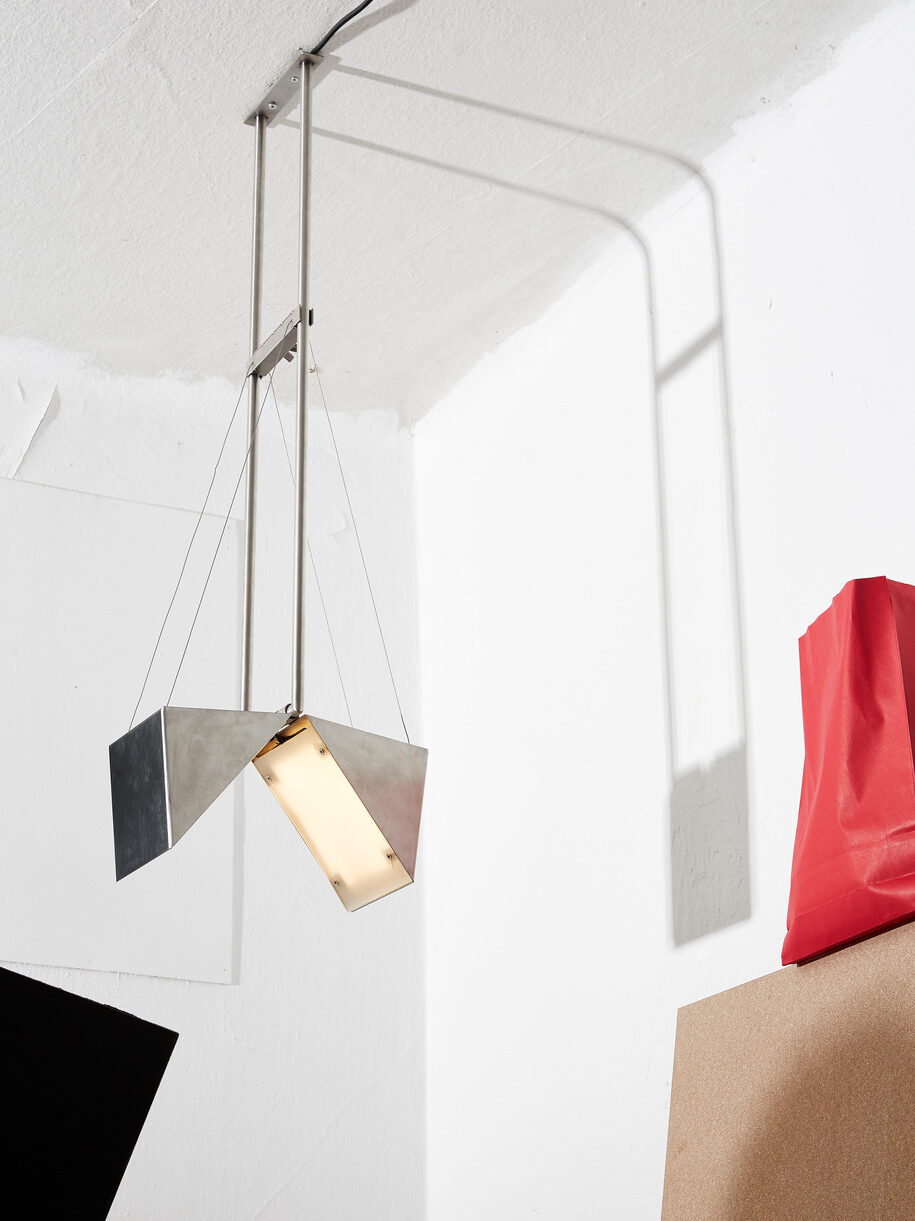
A lamp in the shape of a cube that dominates the space with its presence. With endless opening possibilities it provides light in the 0-360° spectrum.
27. Rocking Light_by Folds
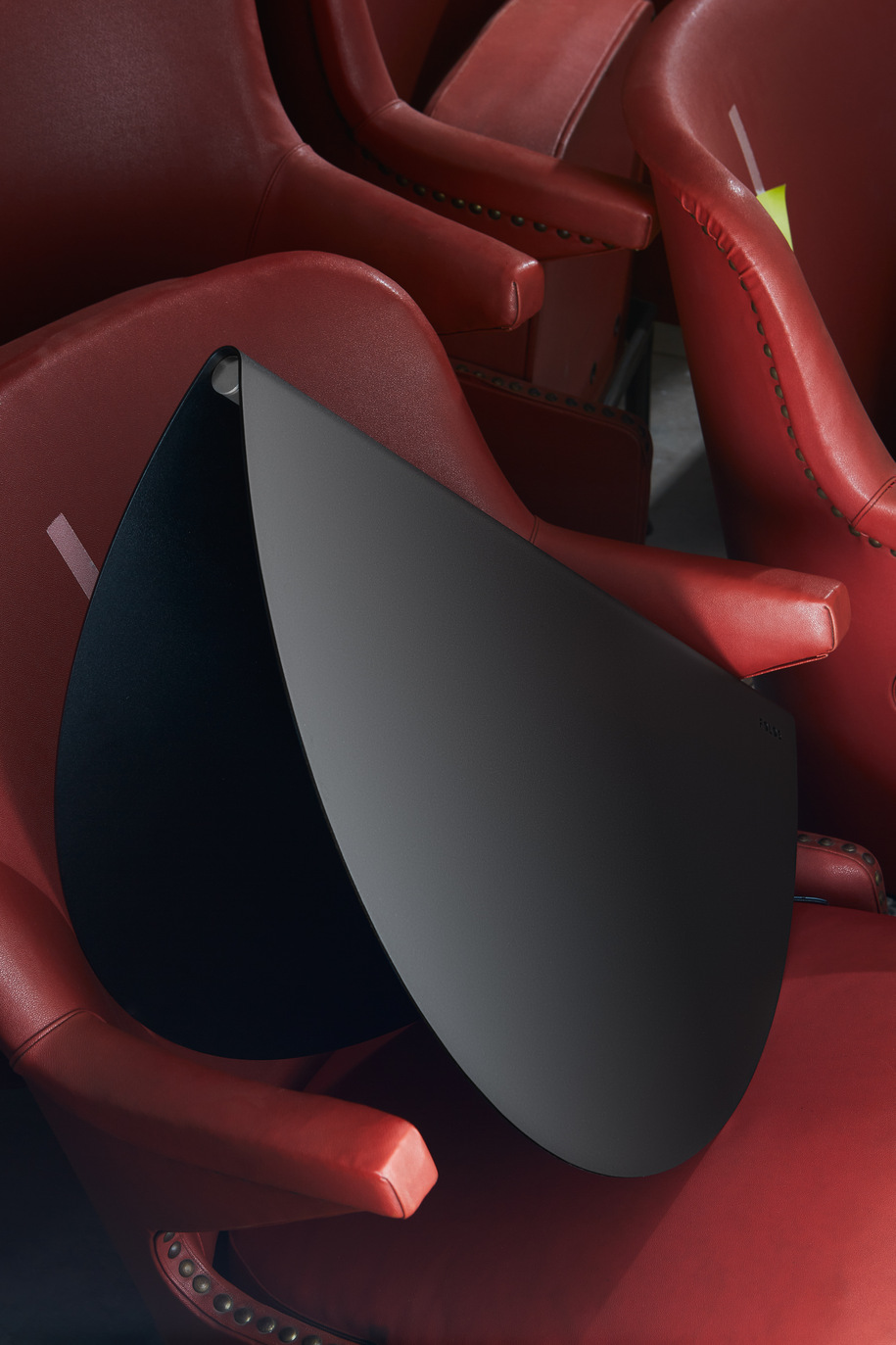
A dynamic folded aluminium floor lamp. The round shape invites playful interaction, transforming it into a rocking lamp.
28. Toasted Furniture_by Nuša Jelenec, Nina Mršnik
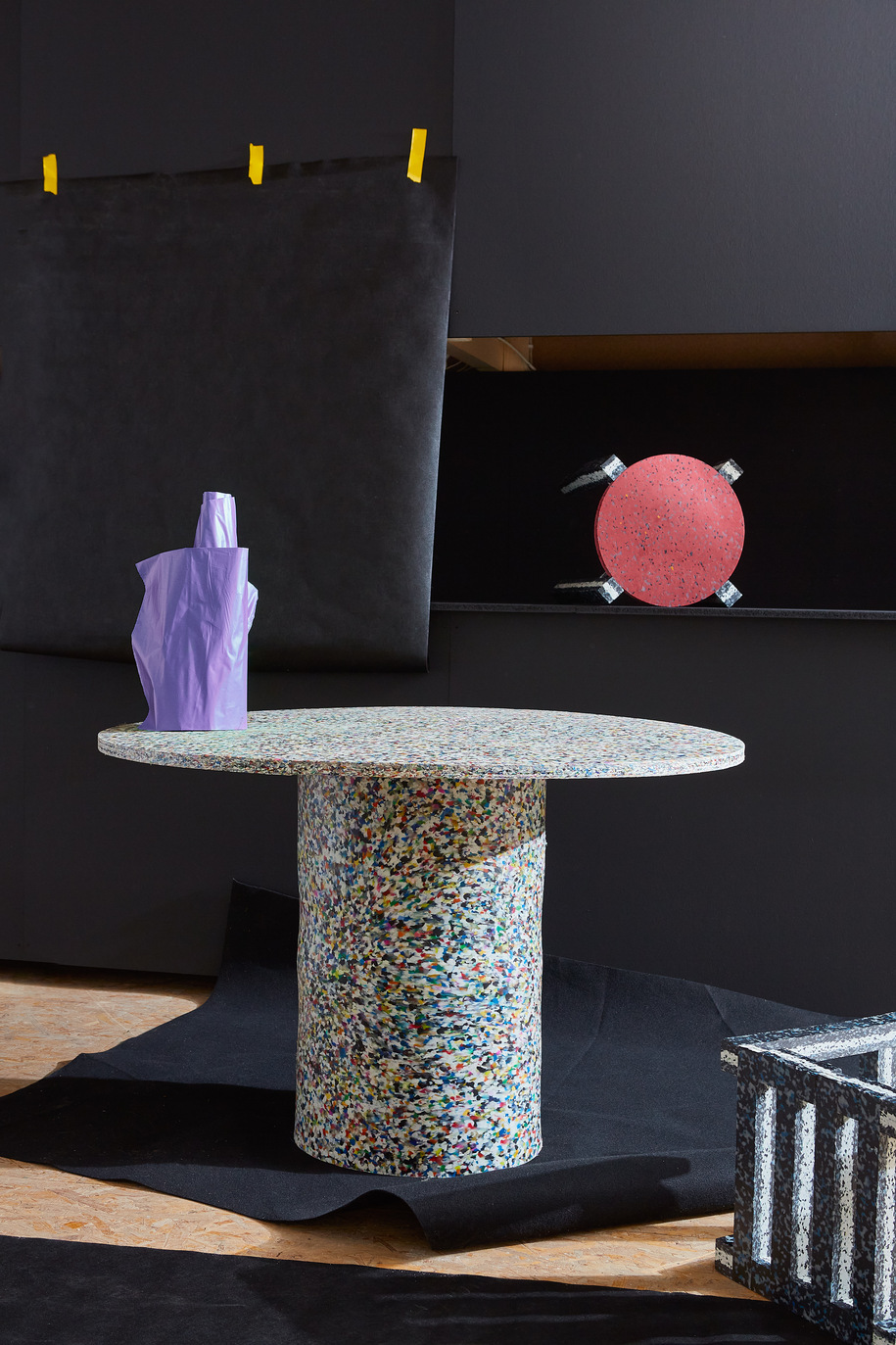
Furniture made from everyday waste plastic processed with the help of a simple and innovative “toaster” which melts waste and transforms it into durable, waterproof plastic panels.
29. Story of Women_by Oloop
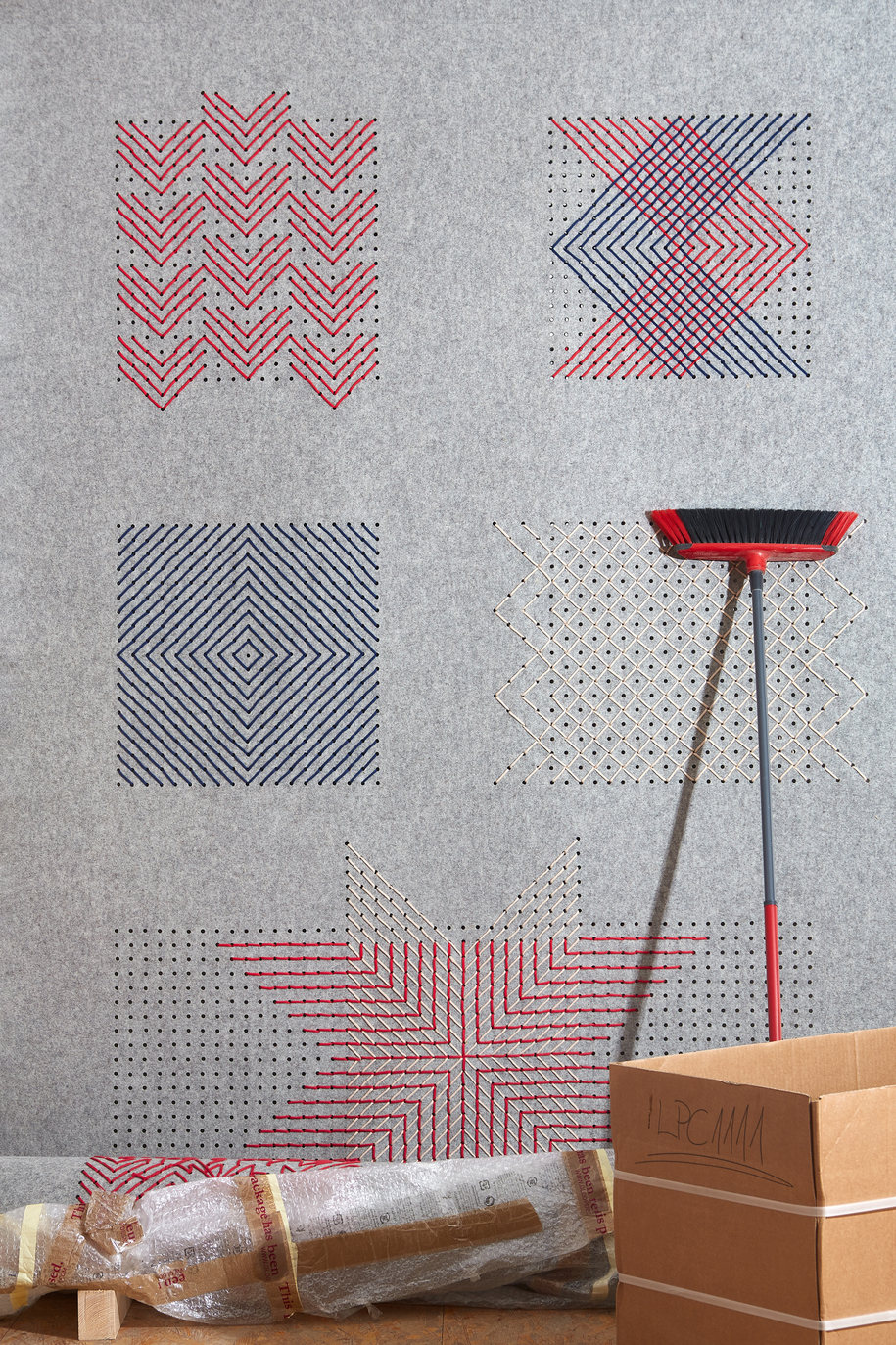
Story of Women is a hand-embroidered textile-wall created by the Oloop group in collaboration with immigrant women. It’s the result of an eight-month creative journey of women of different ages, nationalities, religions, and life circumstances.
30. Serendipity Searcher [BIO 26]_by Thomas Hügin, Maja Kolar, Yuxi Liu, Boris Smeenk, Špela Pavli Perko, Commonplace Studio, Žiga Cerkvenik, Irena Eiselt, Janko Klasinc.
This project was produced within BIO 26 production platform – the 26th Biennial of Design- Common Knowledge curated by Thomas Geisler together with assistant curator Aline Lara Rezende. BIO – The Biennial of Design in Ljubljana is organised by the Museum of Architecture and Design (MAO) and is an international platform for new approaches in design. Under the motto Common Knowledge, 26th Biennial of Design tackled the information crisis. BIO 26 addressed the pressing issues of our society’s primary institutions of knowledge production and transmission, namely a library, a museum, a university and a news media organization.
Video about [Tunnel 29] – Design for a post-apocalyptic world
Credits & Details
Centre for Creativity: Museum of Architecture and Design I MAO Rusjanov trg 7,1000 Ljubljana
Exhibition curation and design: Mika Cimolini, Head of Programme, Centre for Creativity
Exhibition Management: Zala Košnik
Graphic identity: Ivian Kan Mujezinović, Grupa Ee
Social Media: Zavod Neuropolis
Director of Museum of Architecture and Design: Bogo Zupančič
Head of the Centre for Creativity: Anja Zorko
The Centre for Creativity team: Maja Kovačič, Urška Krivograd, Marko Podjavoršek, Bojan Ažman, Mirna Berberović, Marin Berović, Saša Žafran and Blaž Šenica
Photography: Donata Zanotti, Kleme Ilovar
Participating designers:
ARNE VEHOVAR WITH URŠA VRHUNC | MARTIN BRICELJ BARAGA (MOTA & BELLASTOCK) | DAN ADLEŠIČ (ANSAMBEL) | DARJA MALEŠIČ | DAVID TAVČAR | PRIMOŽ JEZA STUDIO WITH DONAR | EVA GARIBALDI | GAŠPER FABIJAN | GRUPO H | IZTOK LEMAJIČ (IDFL) | KOFEIN | KRONOTERM WITH GIGODESIGN | MASHONI | MATEJ ŠTEFANAC | LARA BALER, MATIC KOMEL, BOŠTJAN KOPINŠEK | MONOCHROME | NIKOLAJ SALAJ, ANJA MENCINGER (FOLDS) | NINA MRŠNIK AND NUŠA JELENEC | OLOOP | PETER ŠTRUKELJ | ADDID PLUS (RUDI ANDRAŽ VRHOVŠEK AND BLAŽ ŠKODLAR) | STUDIO MOSTE | TANJA PAK | FLOIOS JEWERLY (TINA KOŠAK) | TINA RUGELJ | TOJO.I.TO | TRAJNA WITH MATIJA BILOSLAV MILKOVIČ AND KATARINA LAMPIČ | VERONIKA ROŽMANC | VULGARIS WOODCUT | LIBRARY TEAM FROM BIO26.
READ ALSO: The House Recast in Haringey, North London | Studio Ben Allen